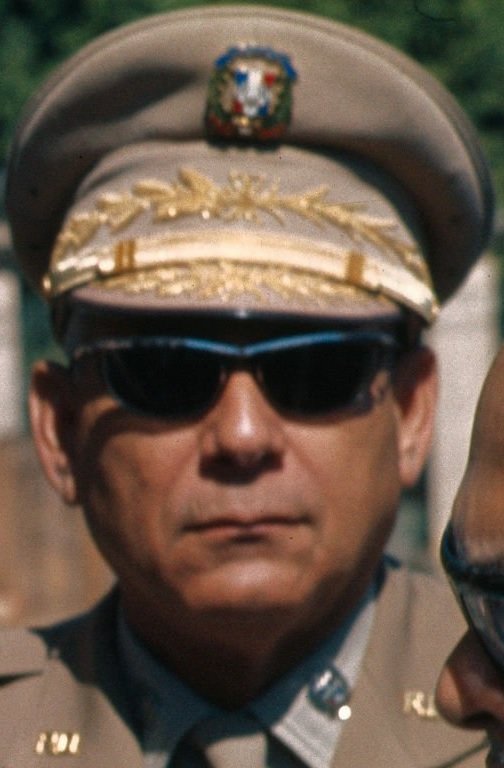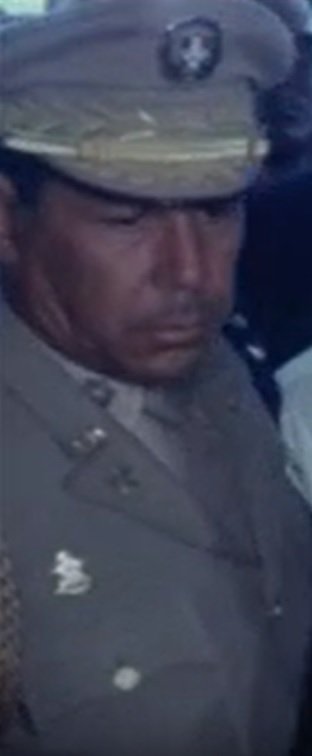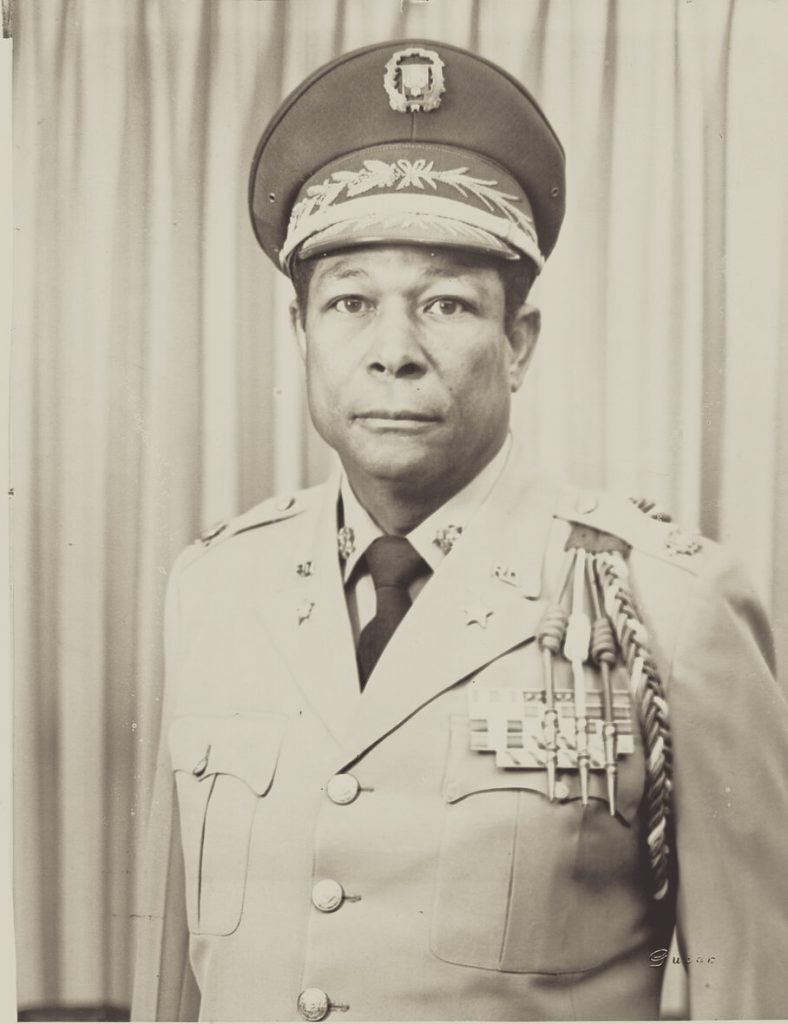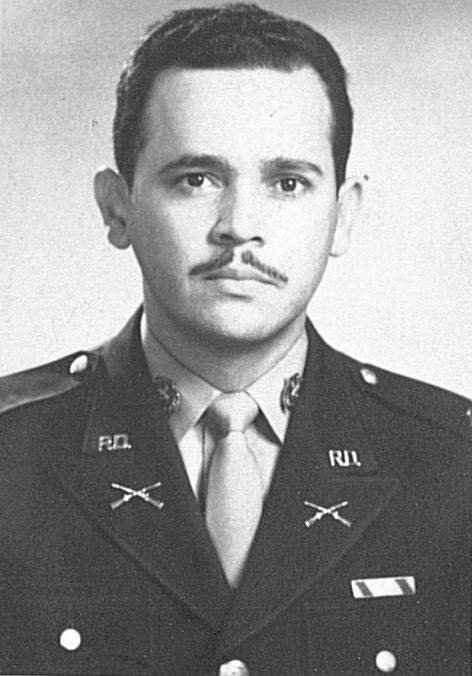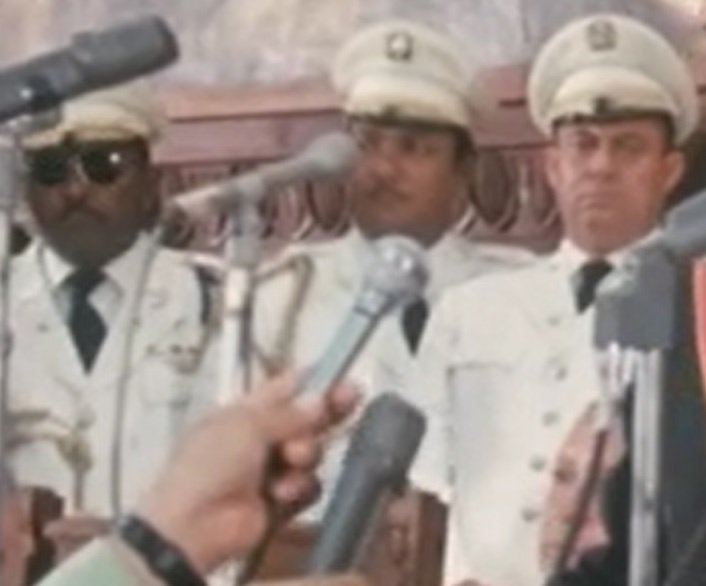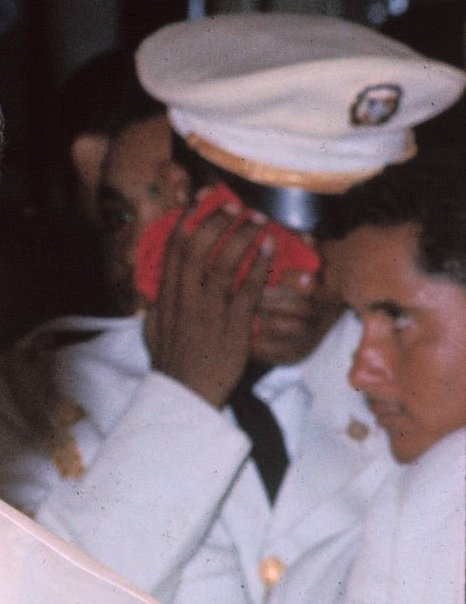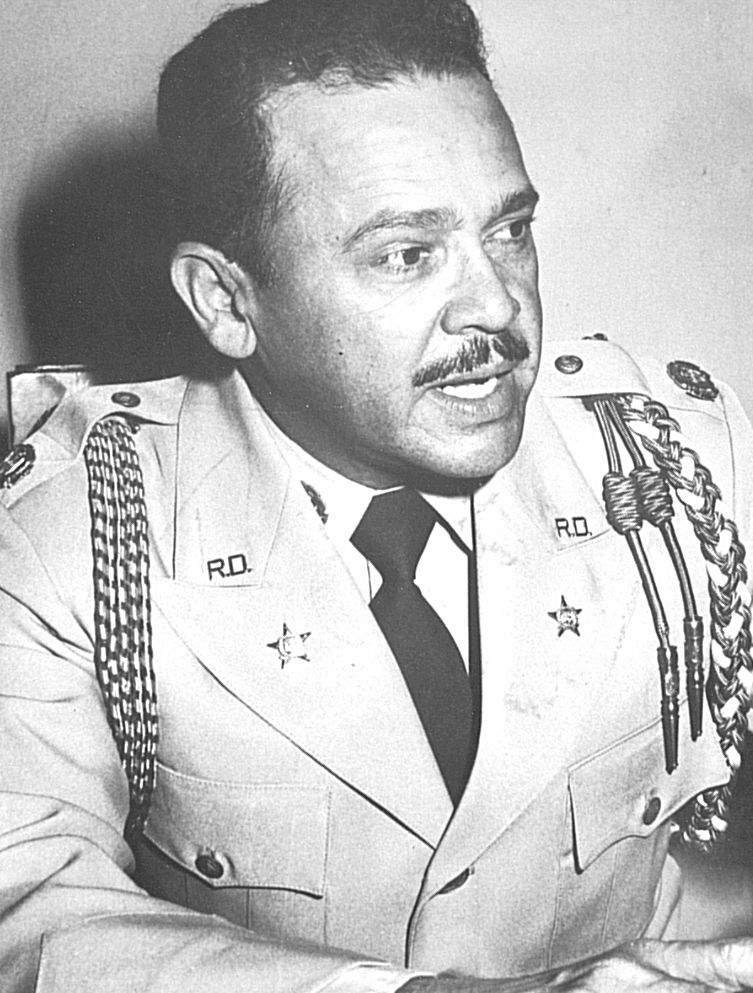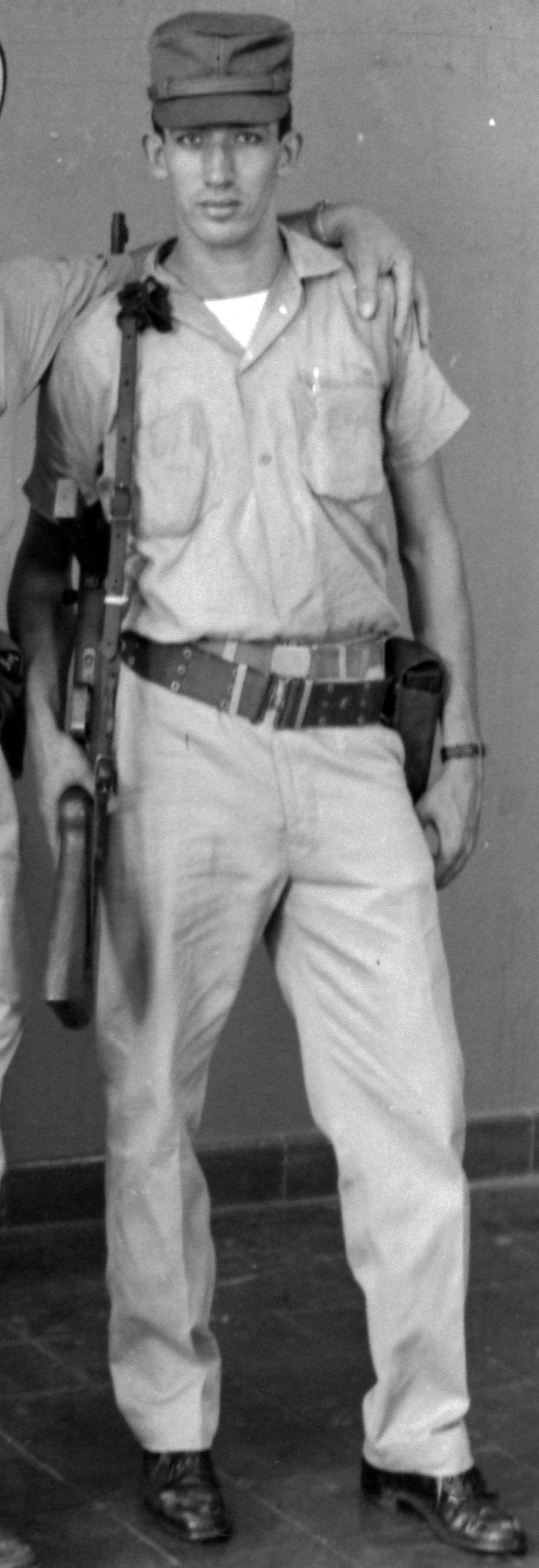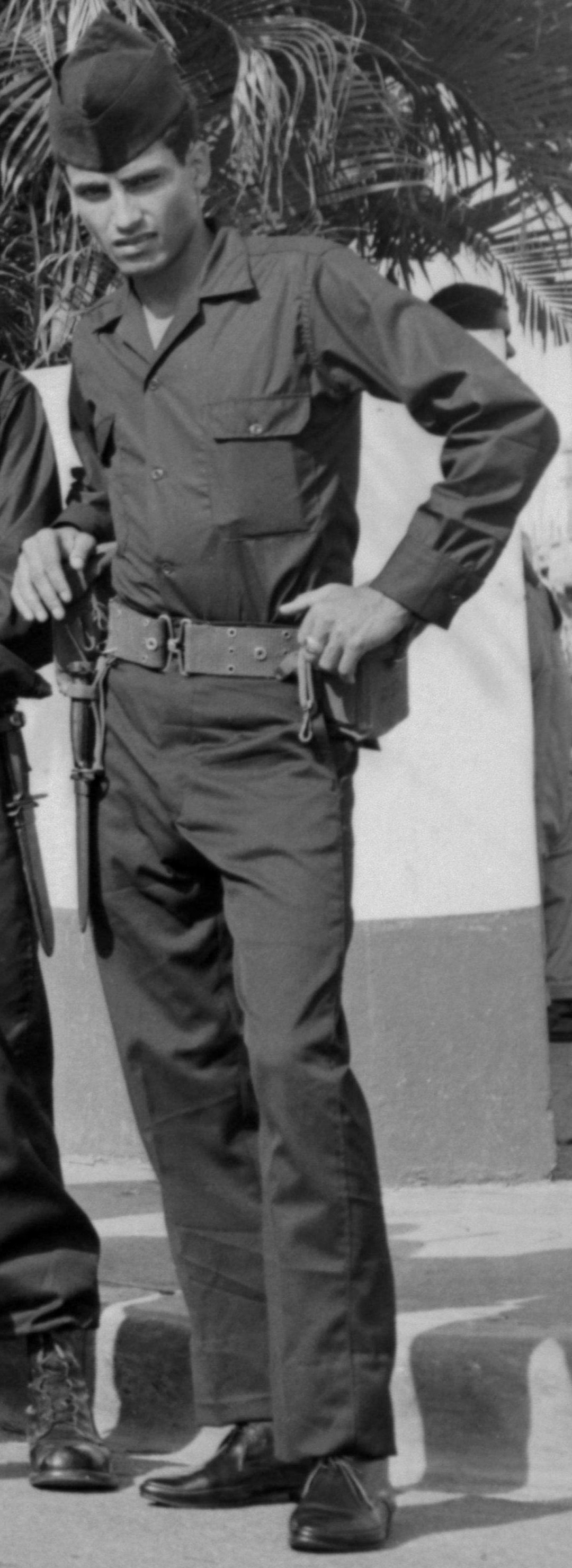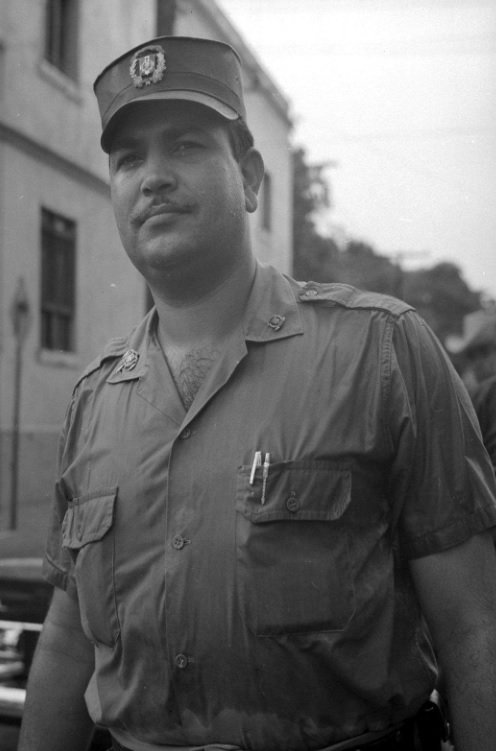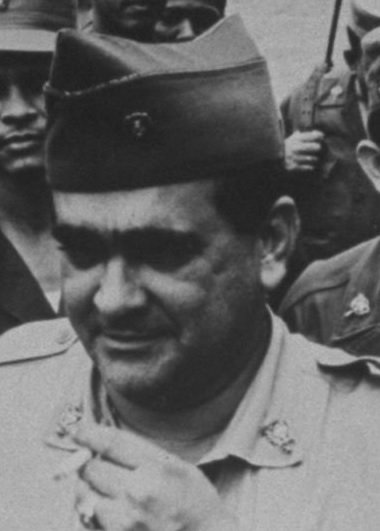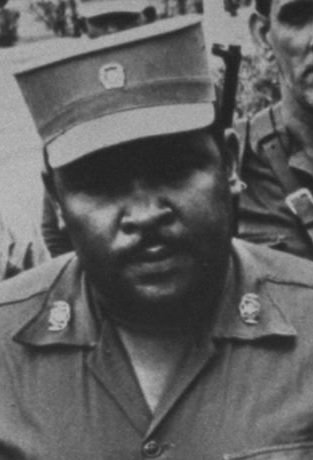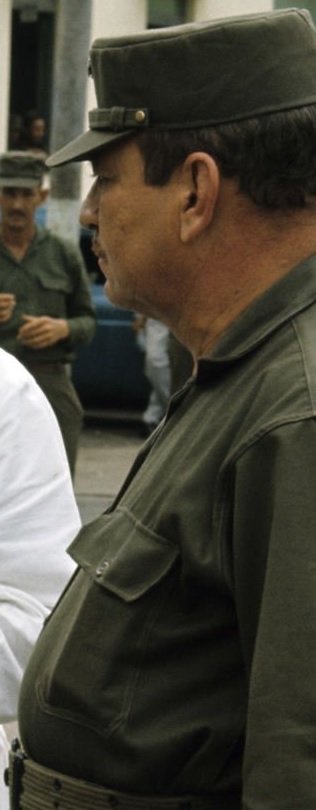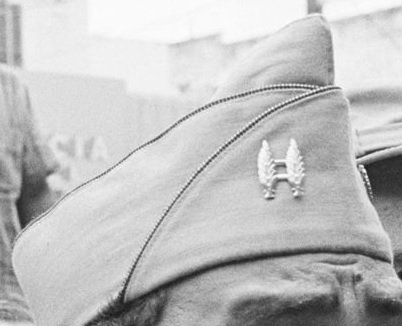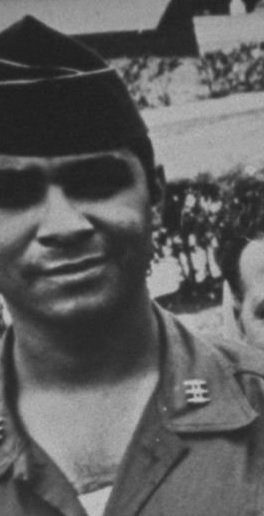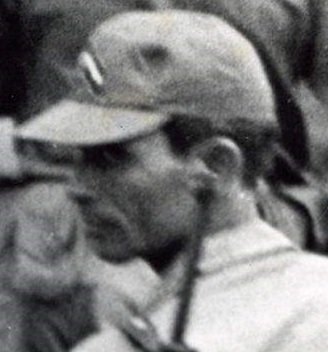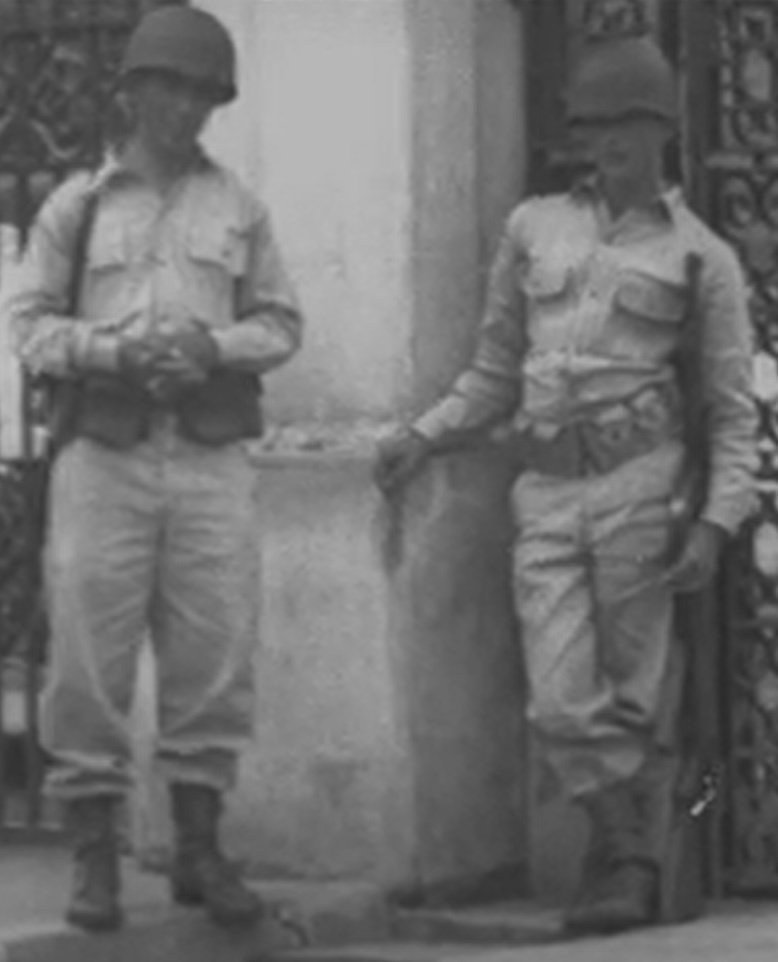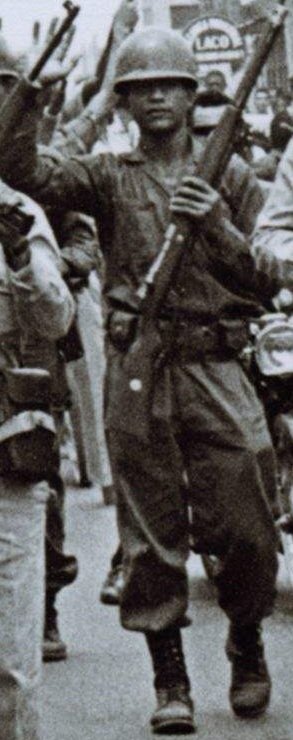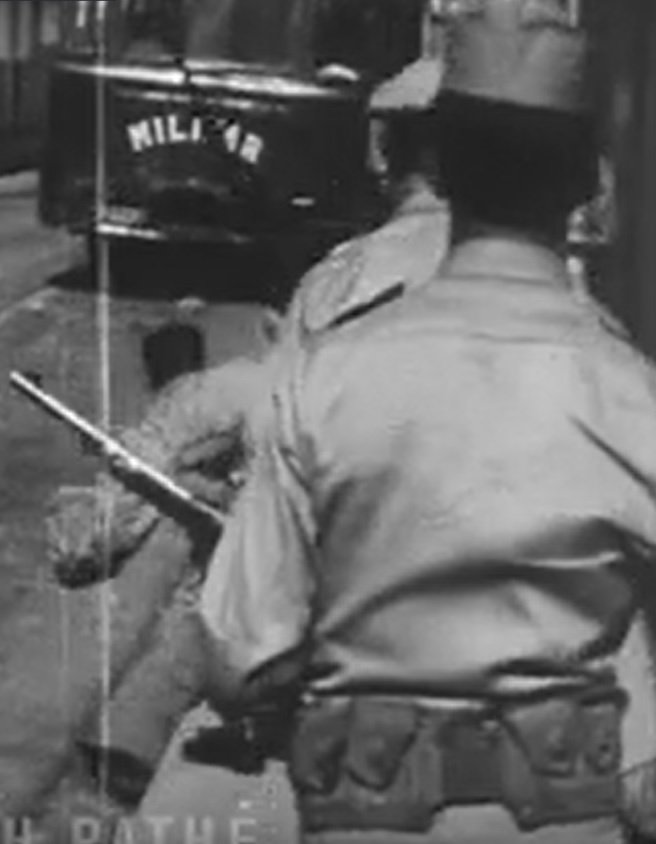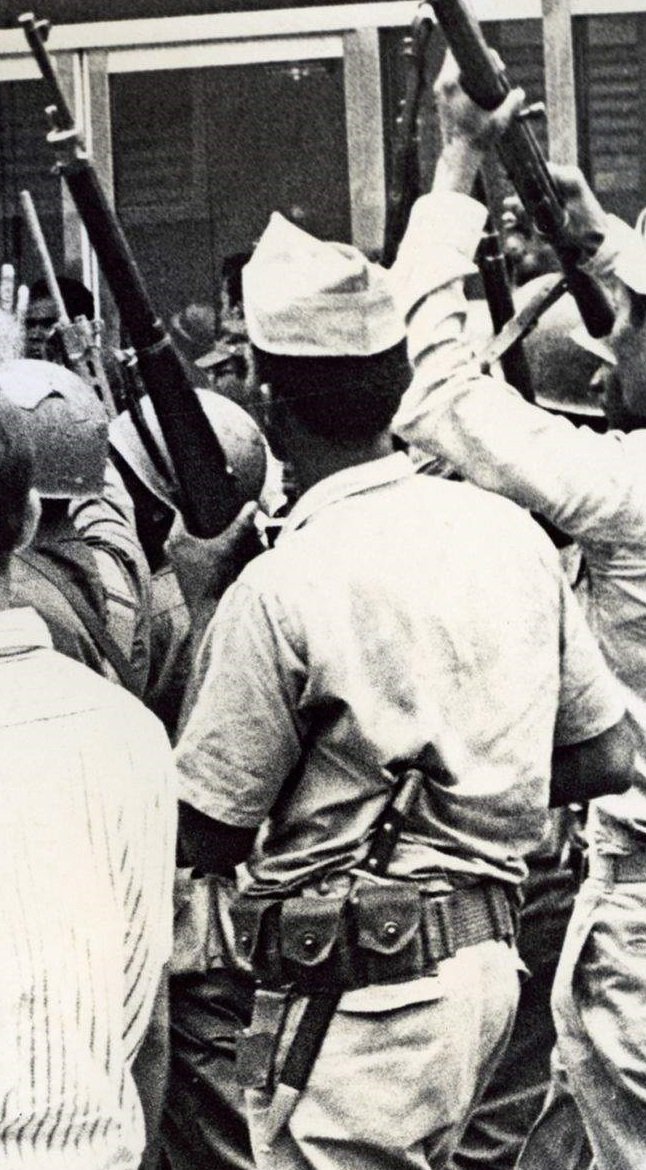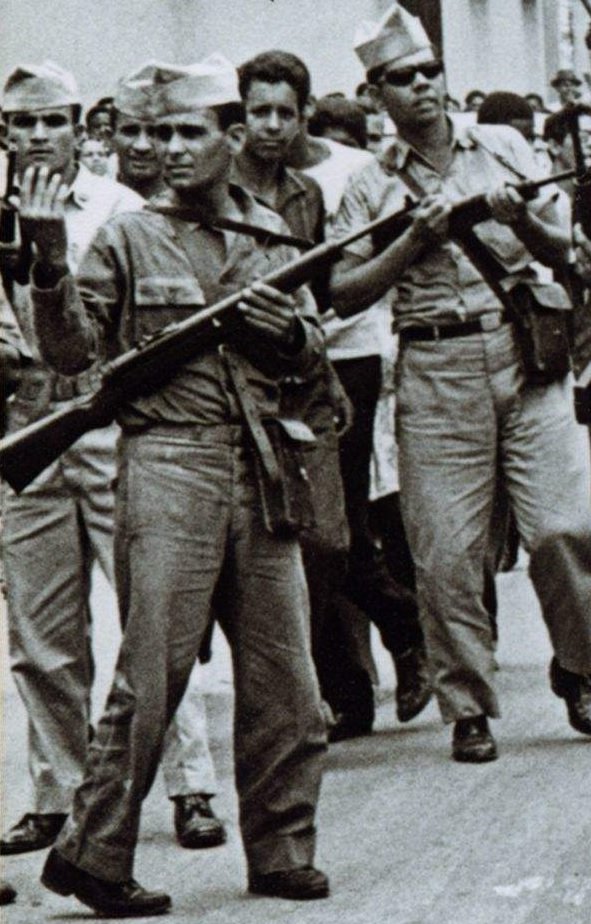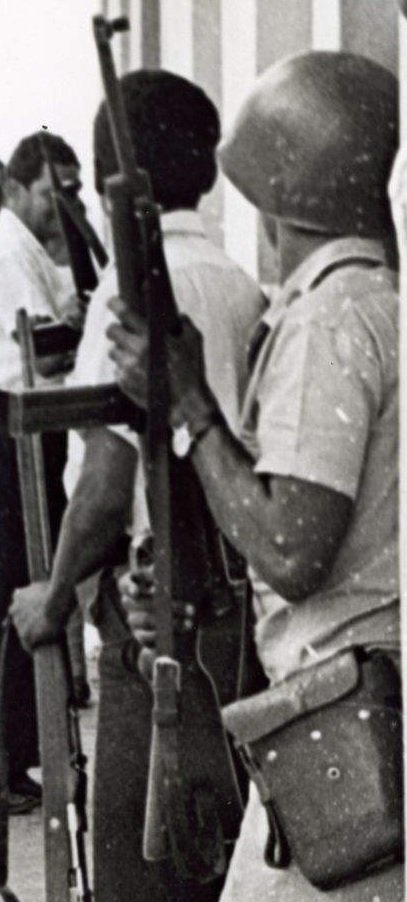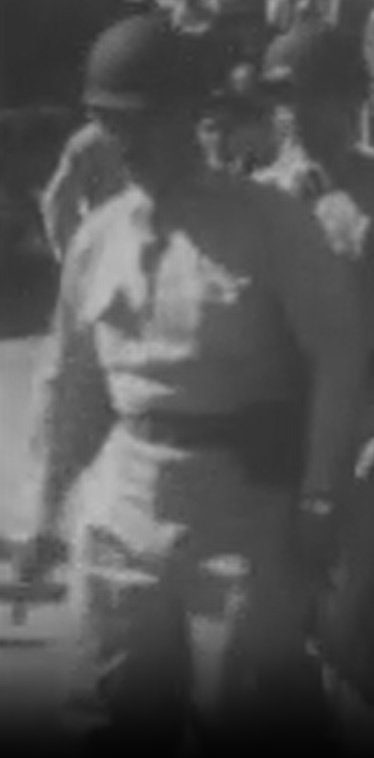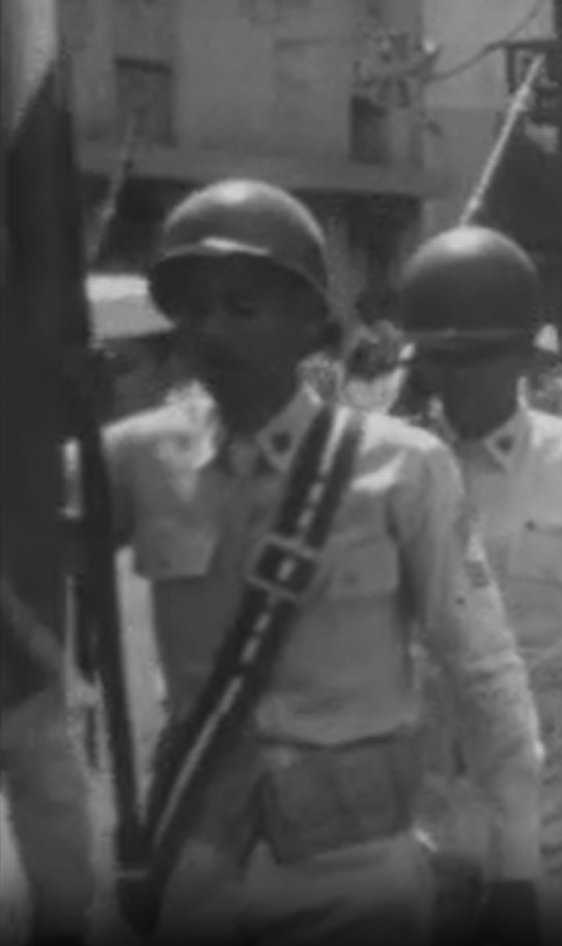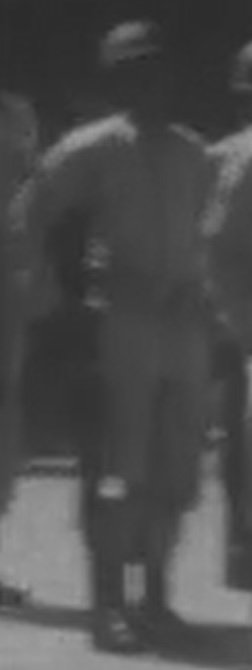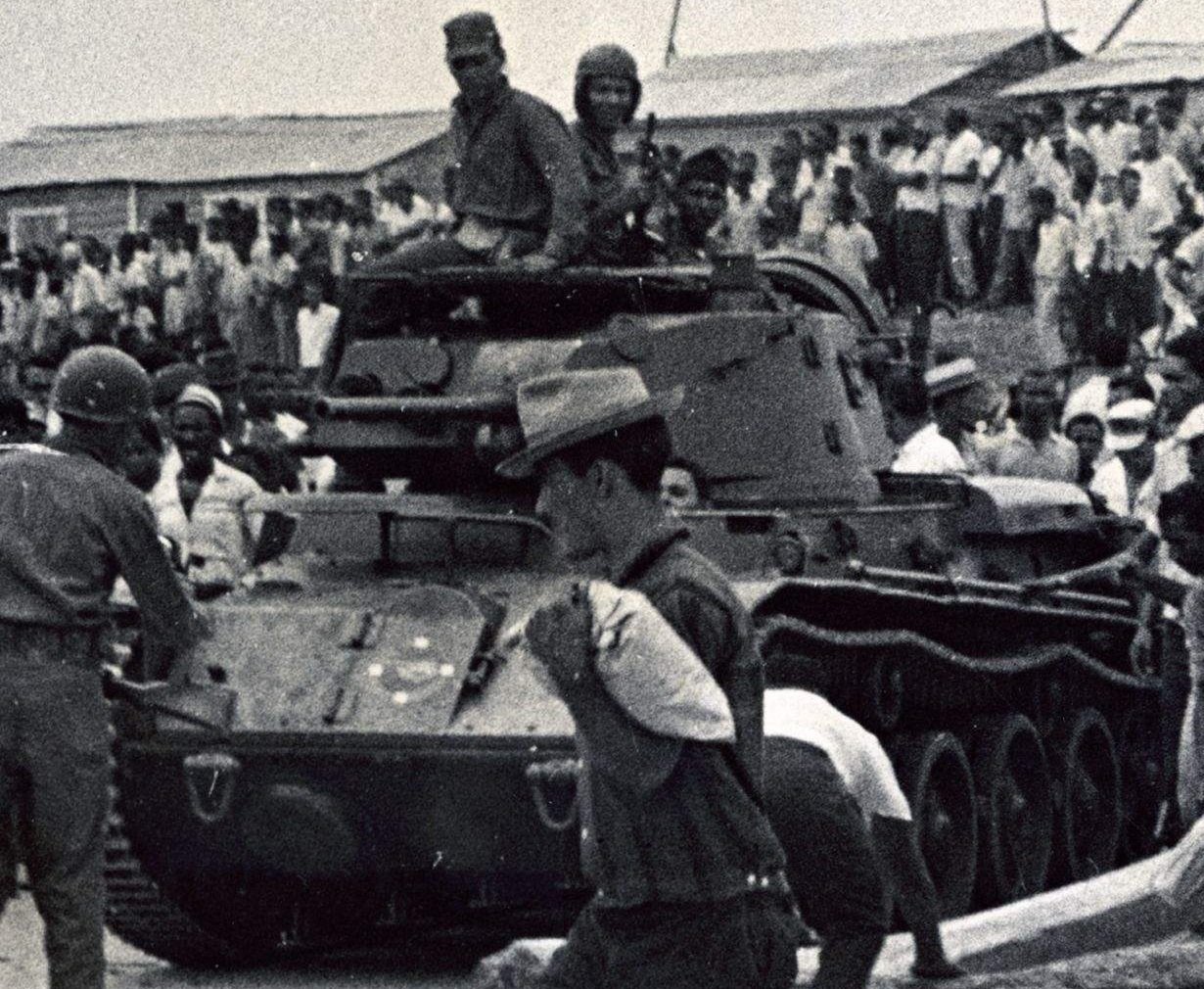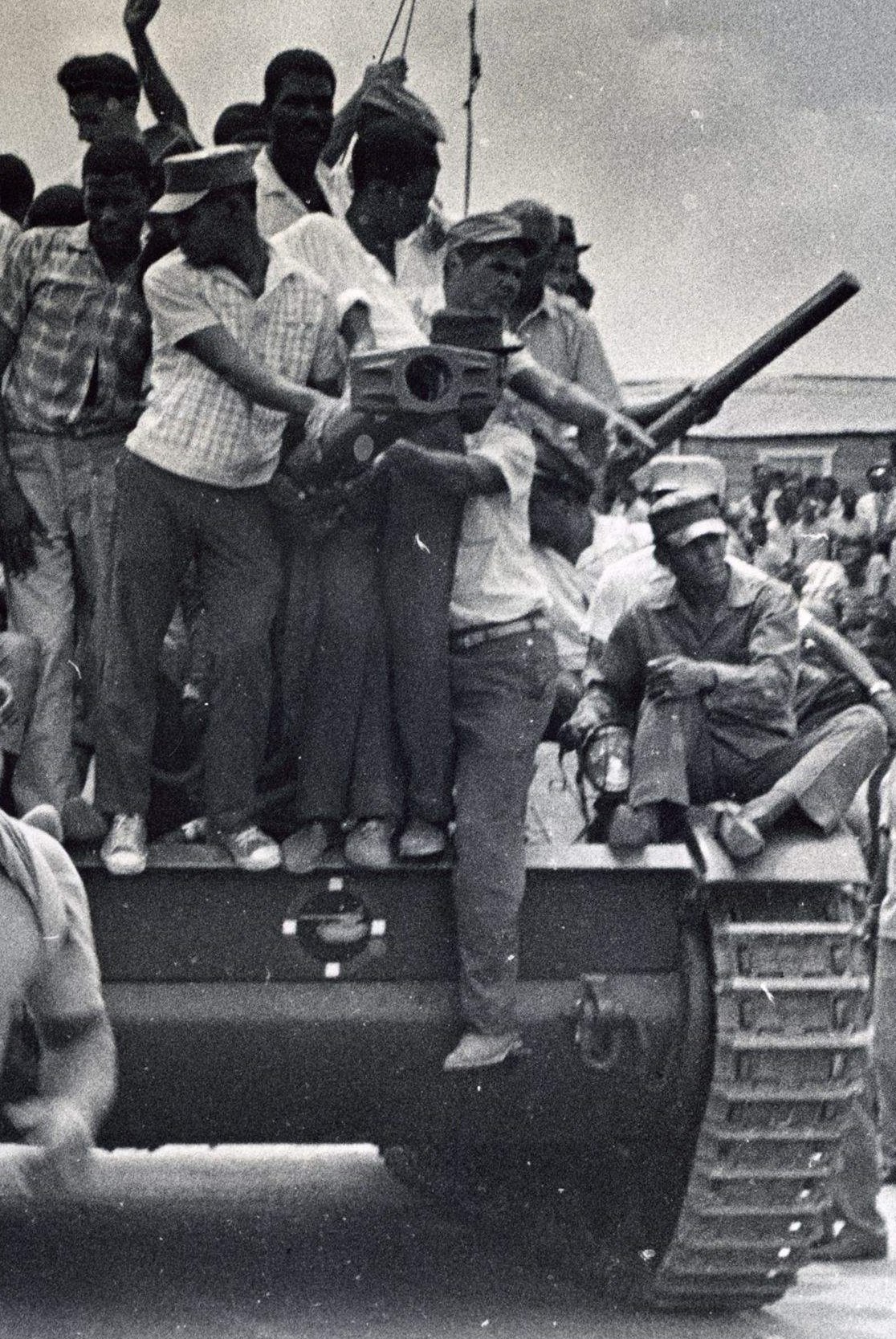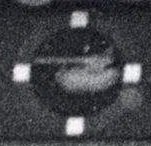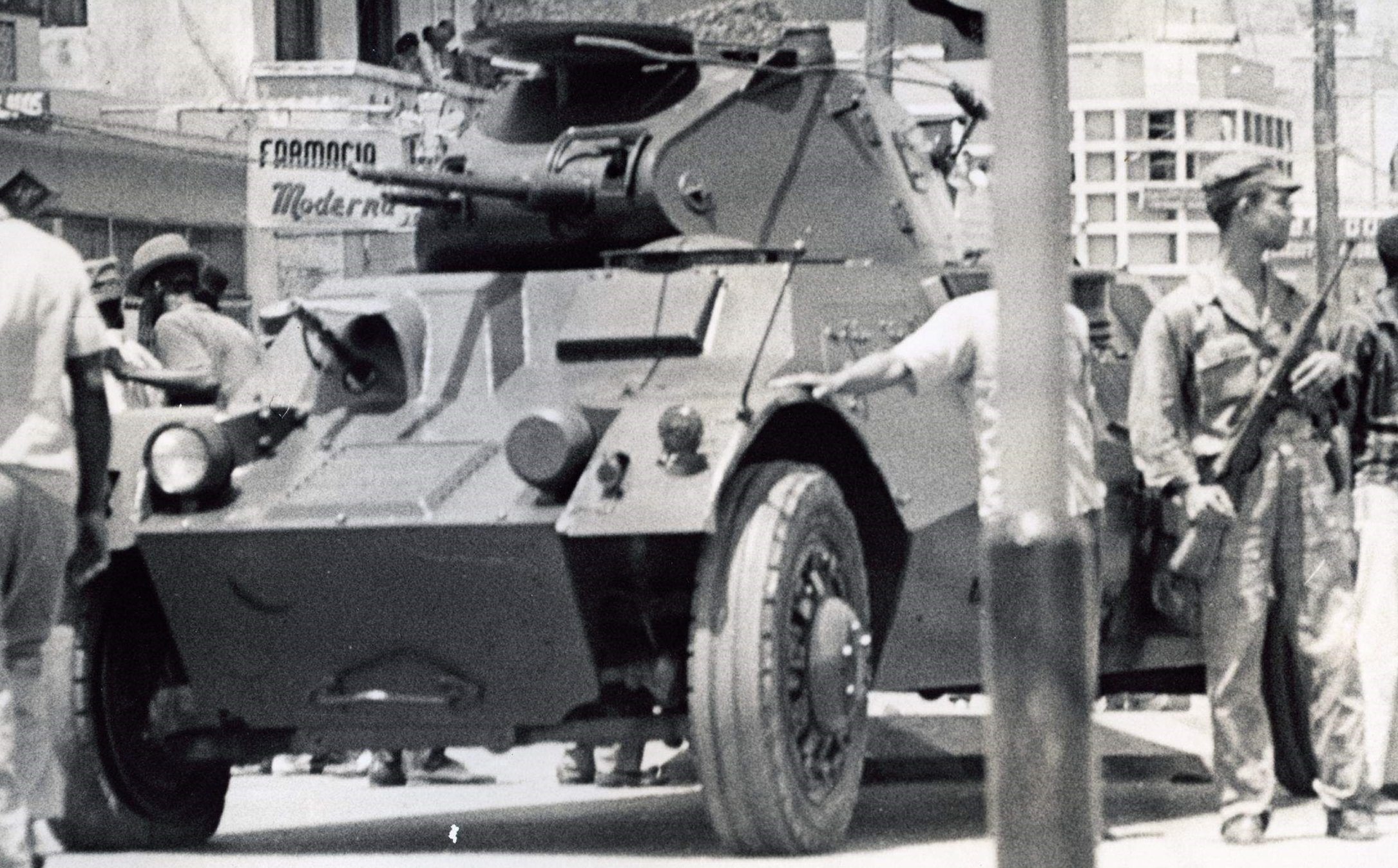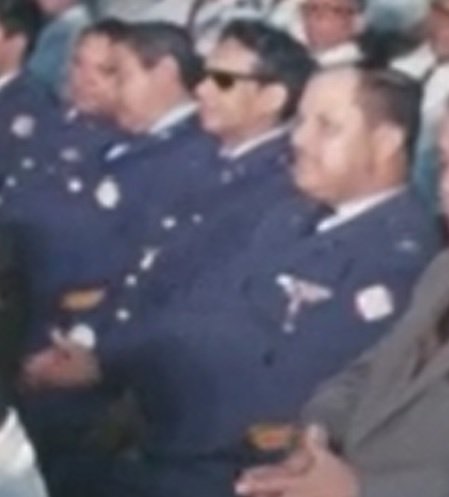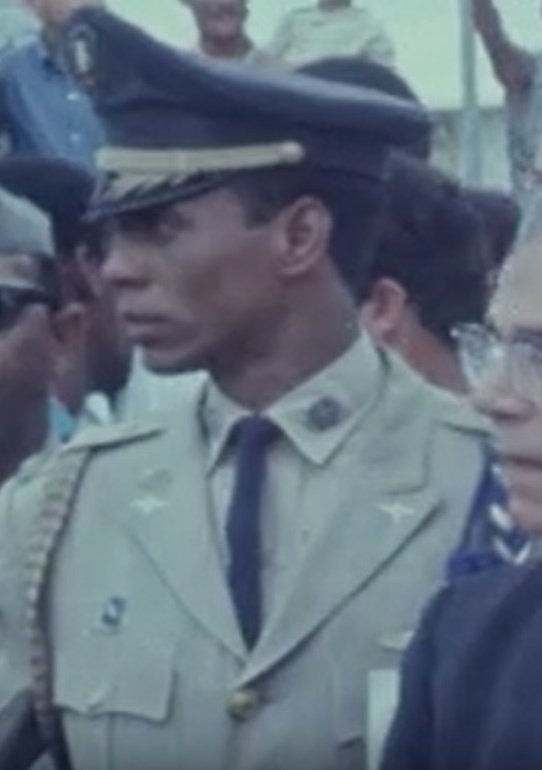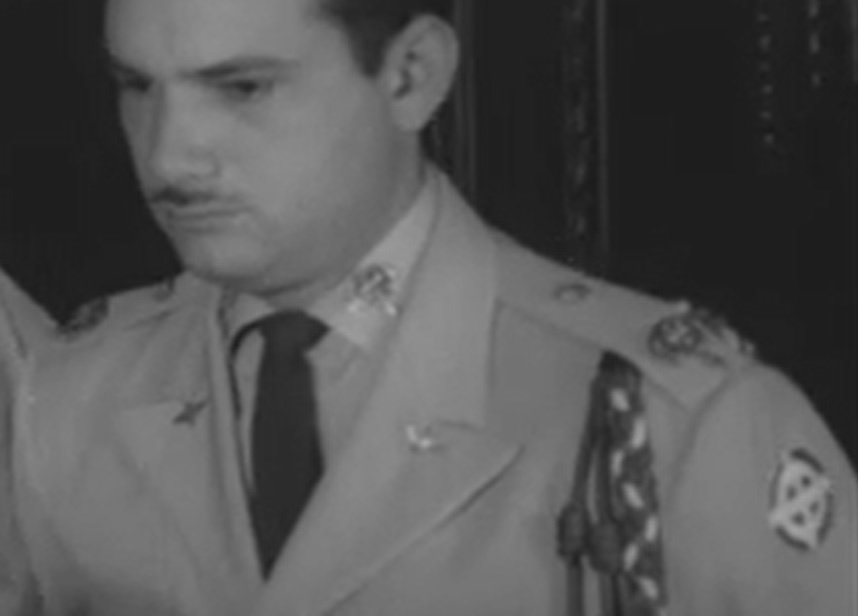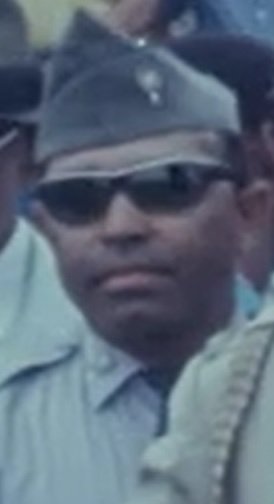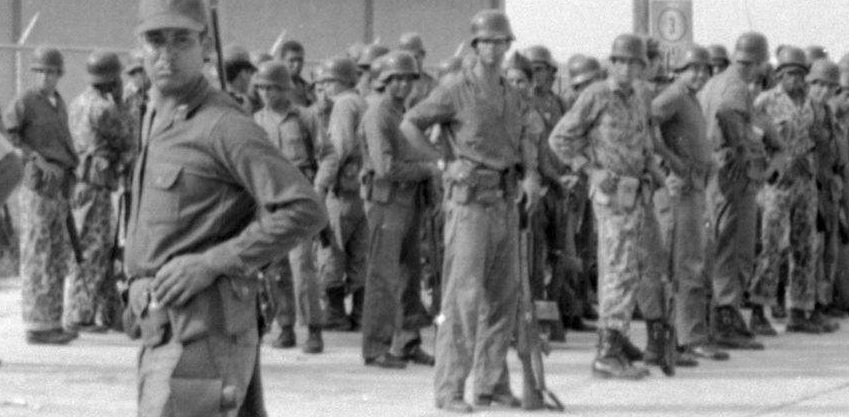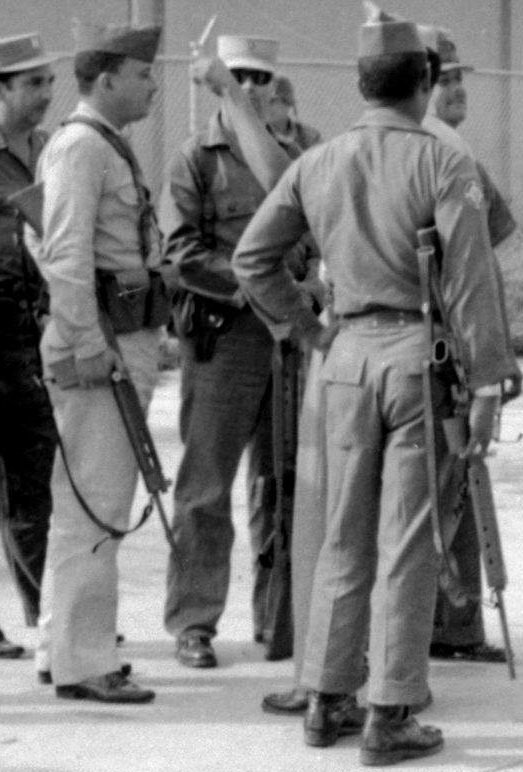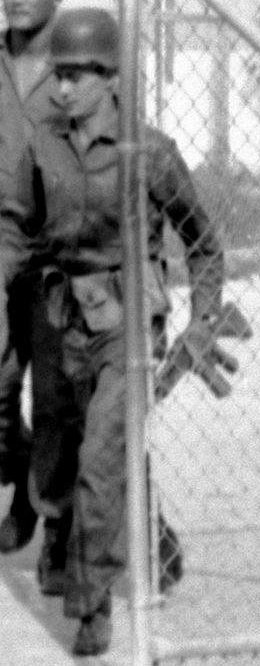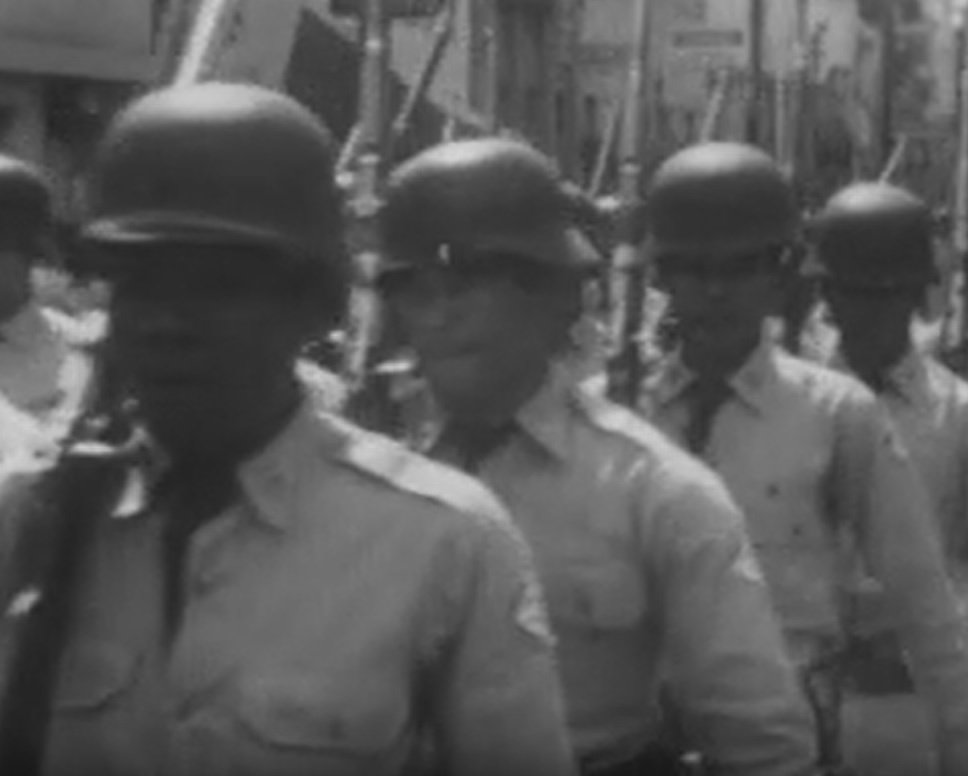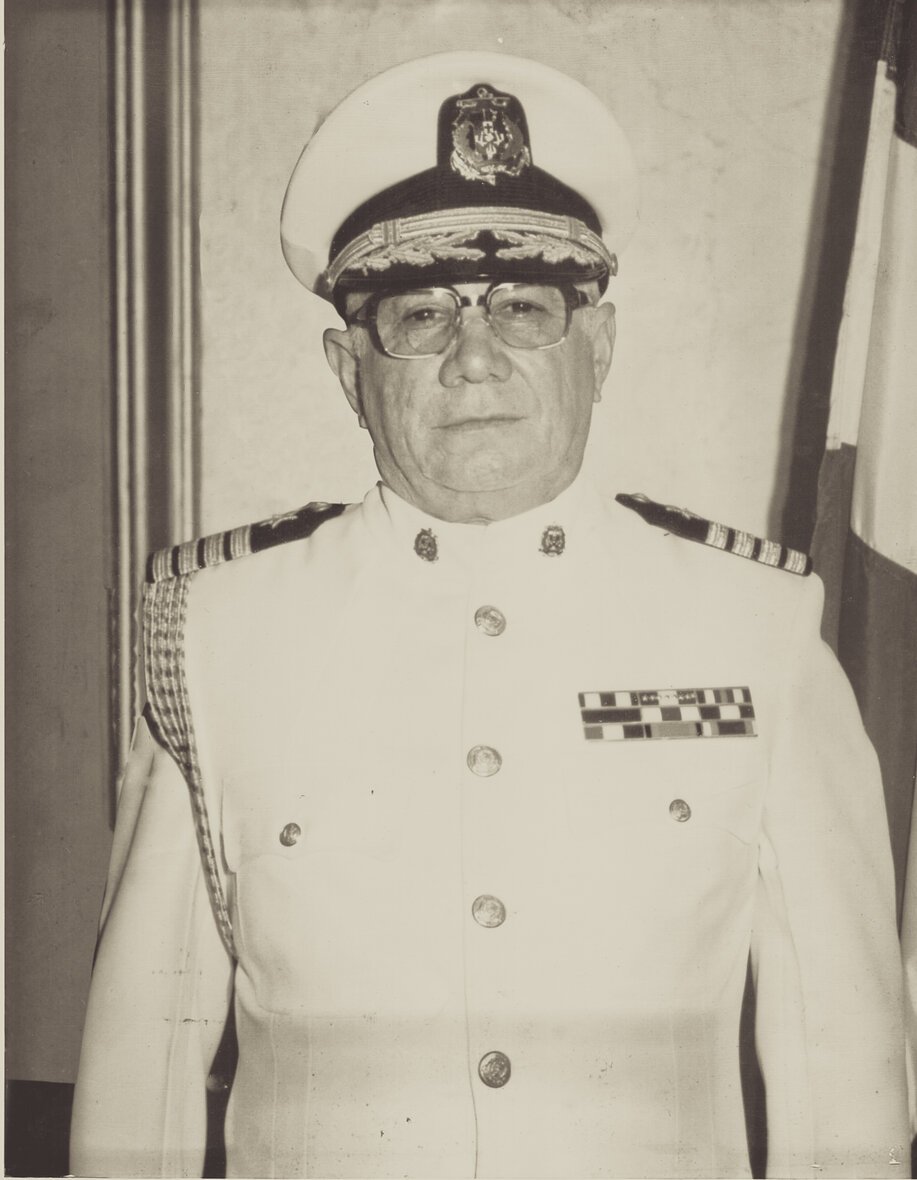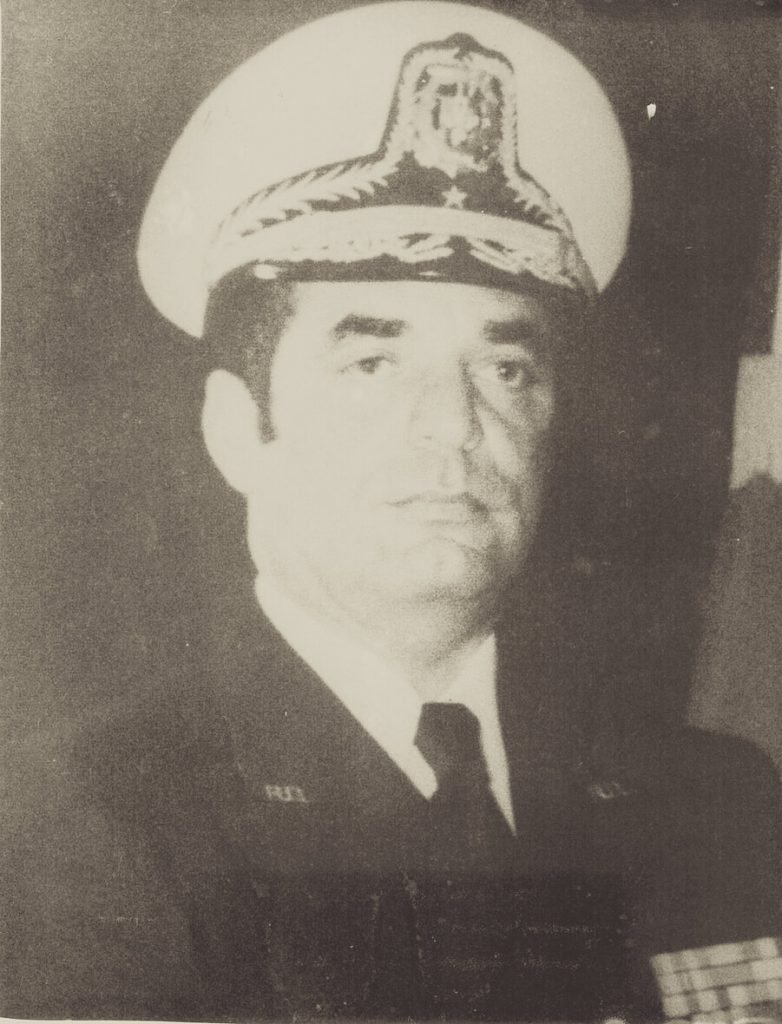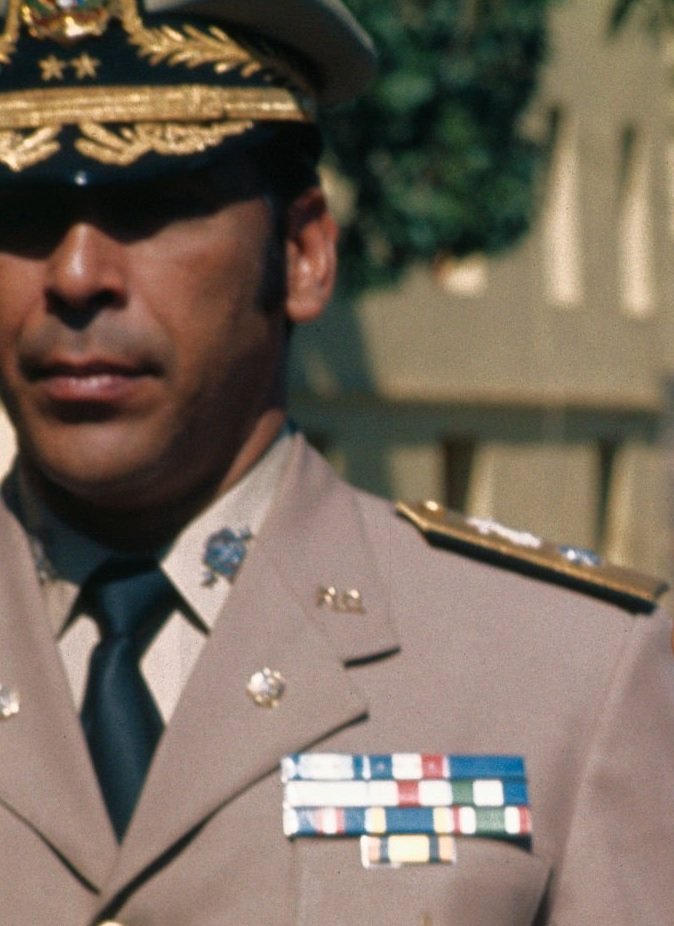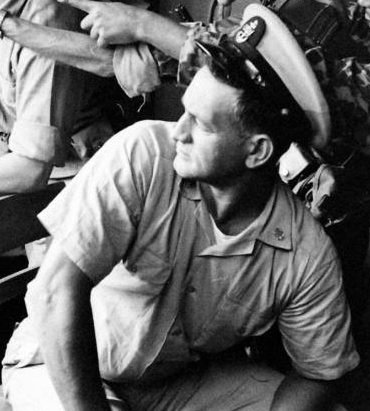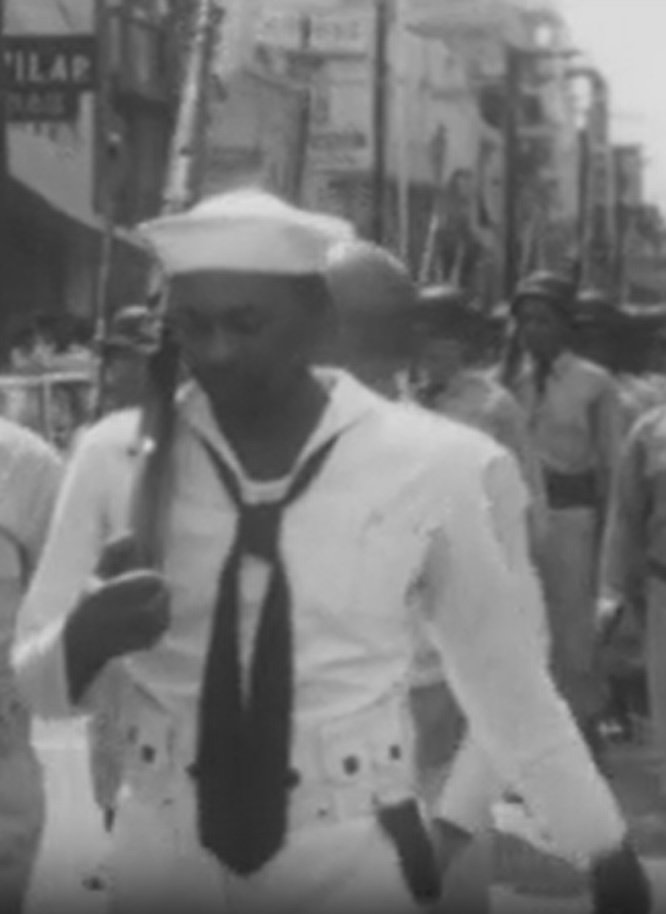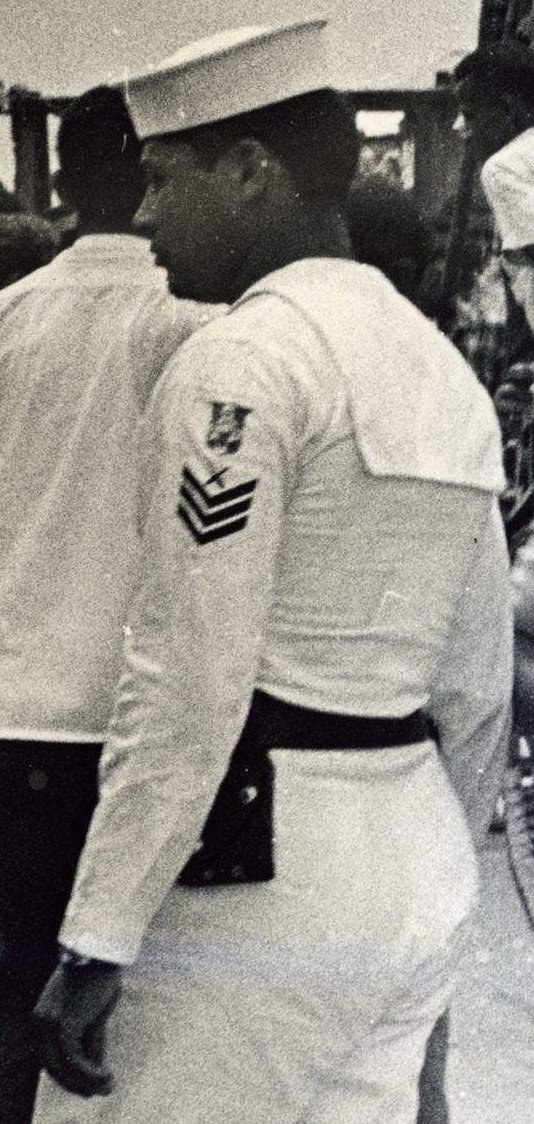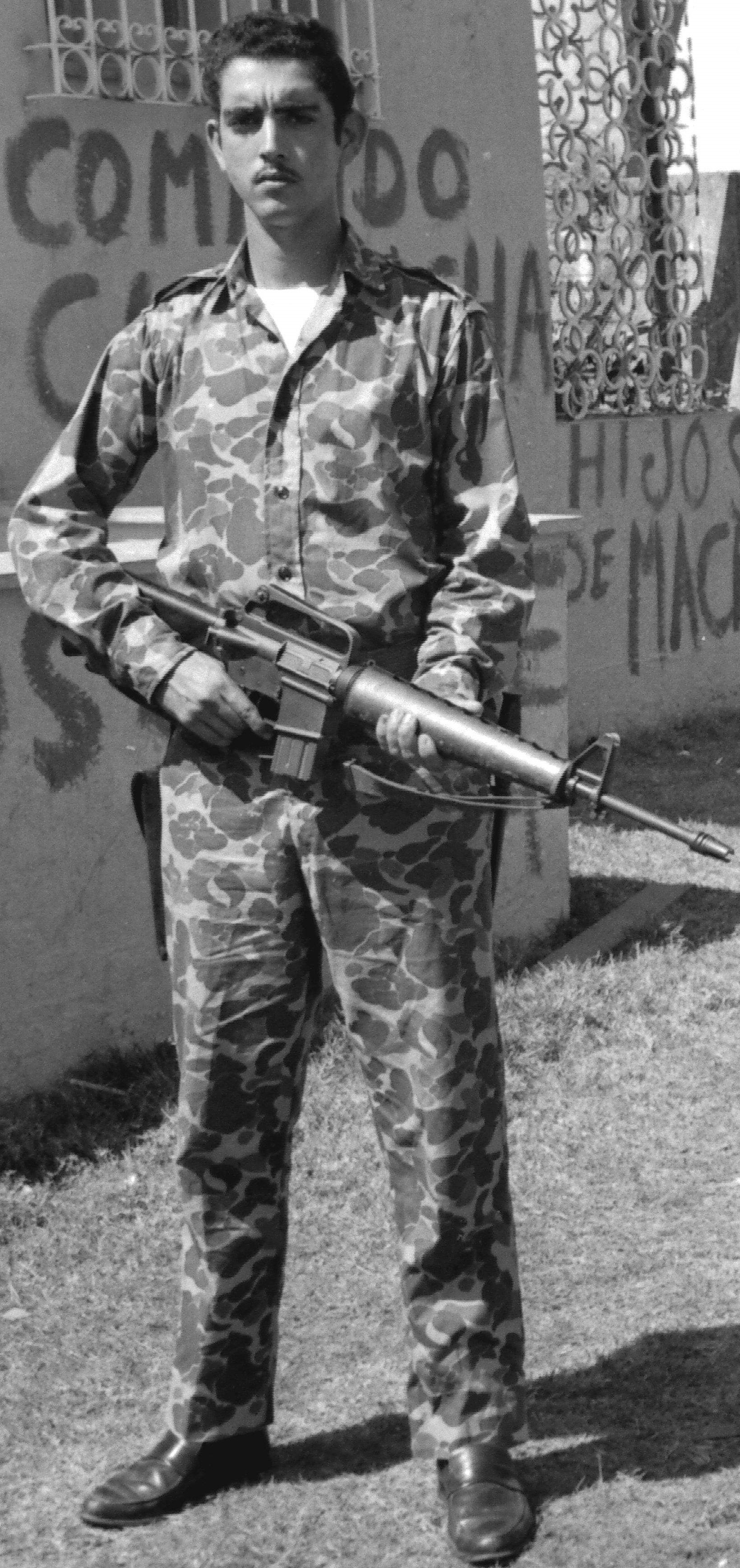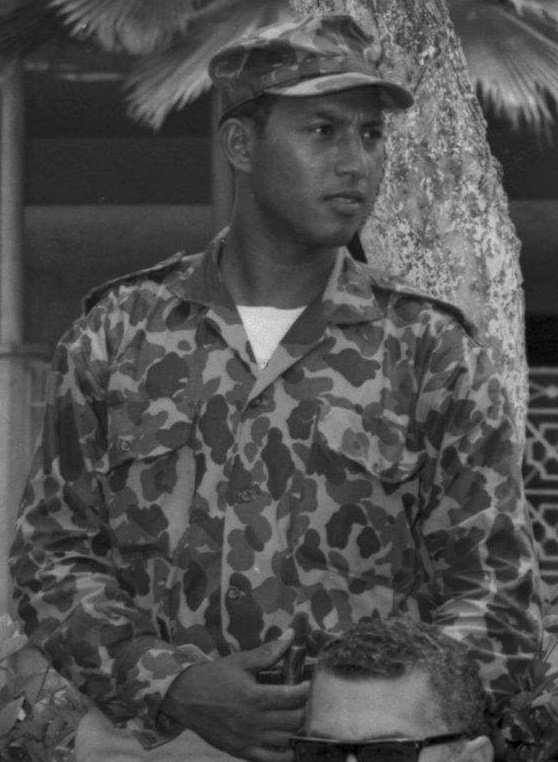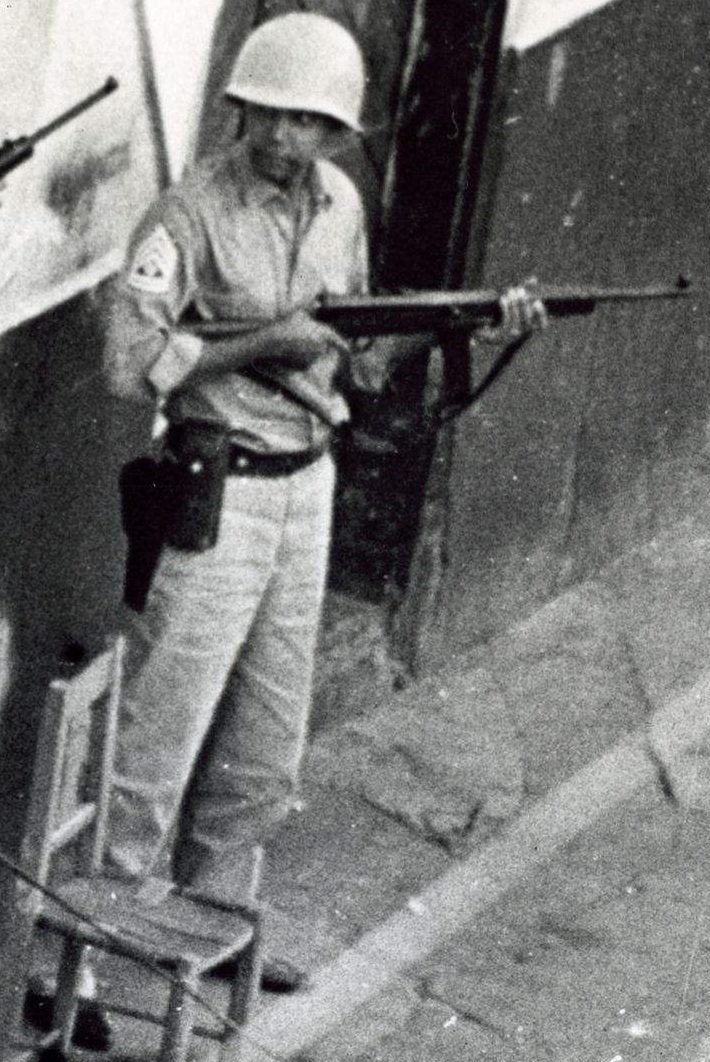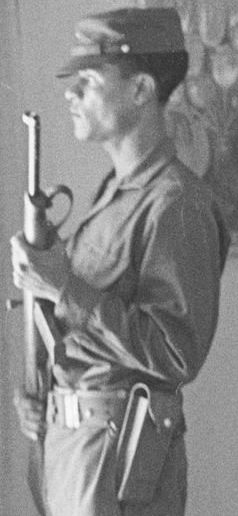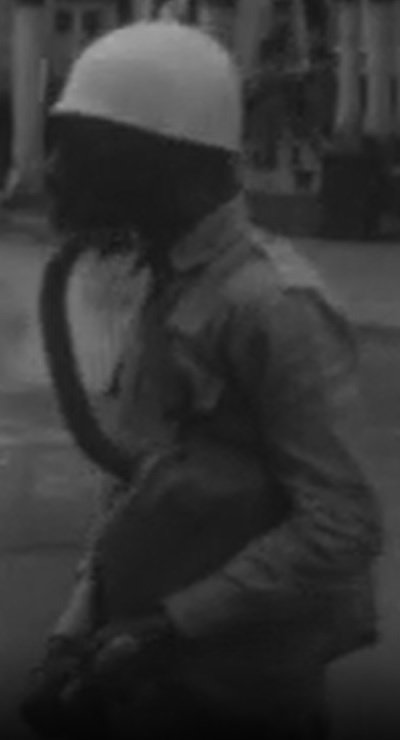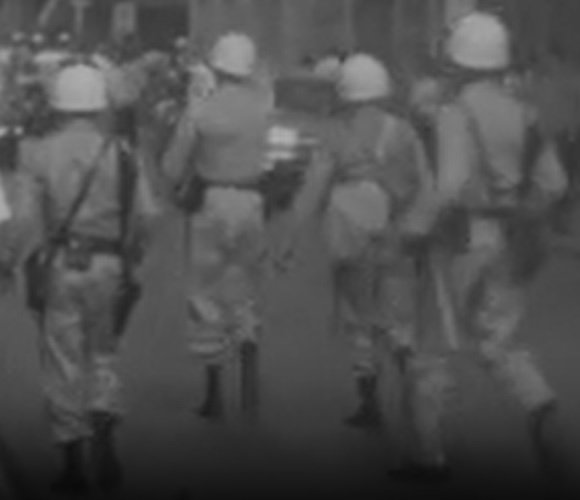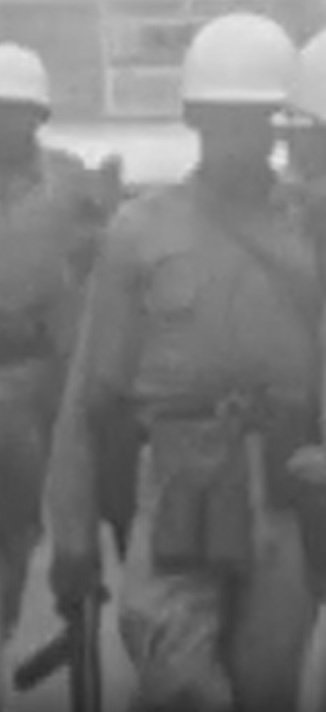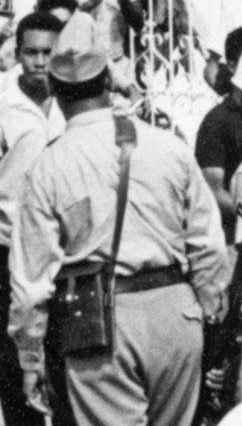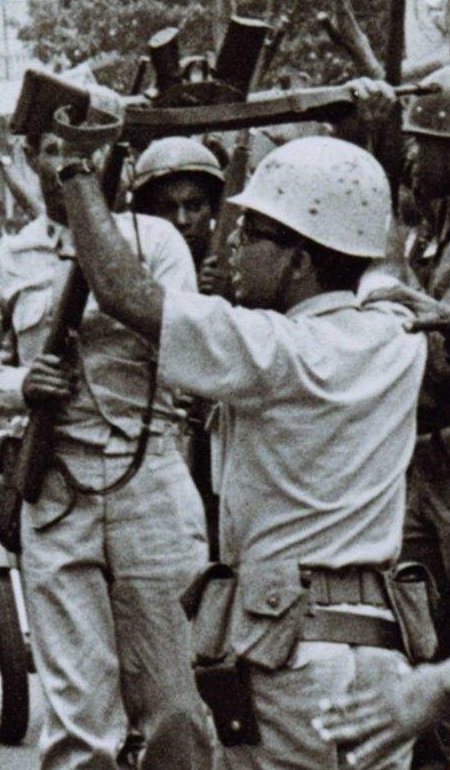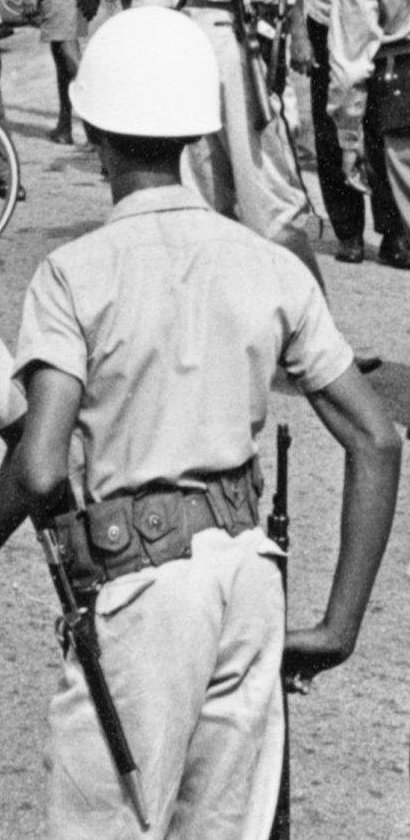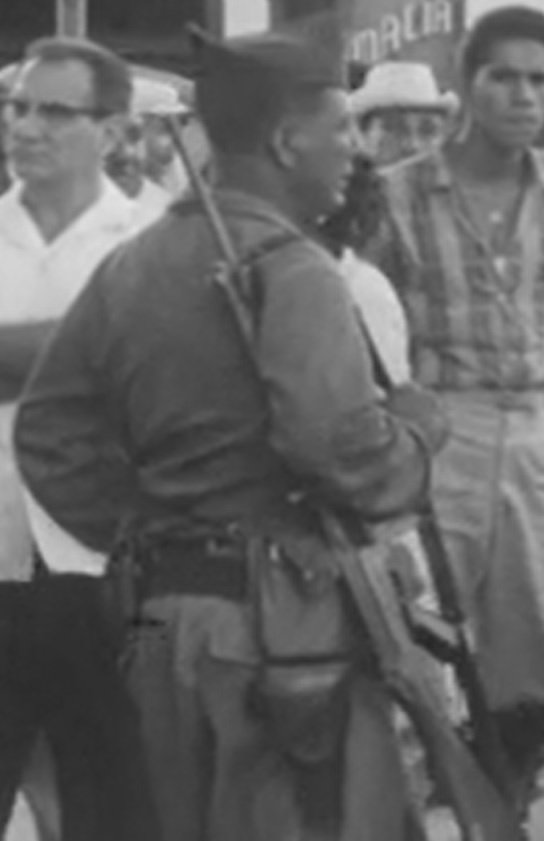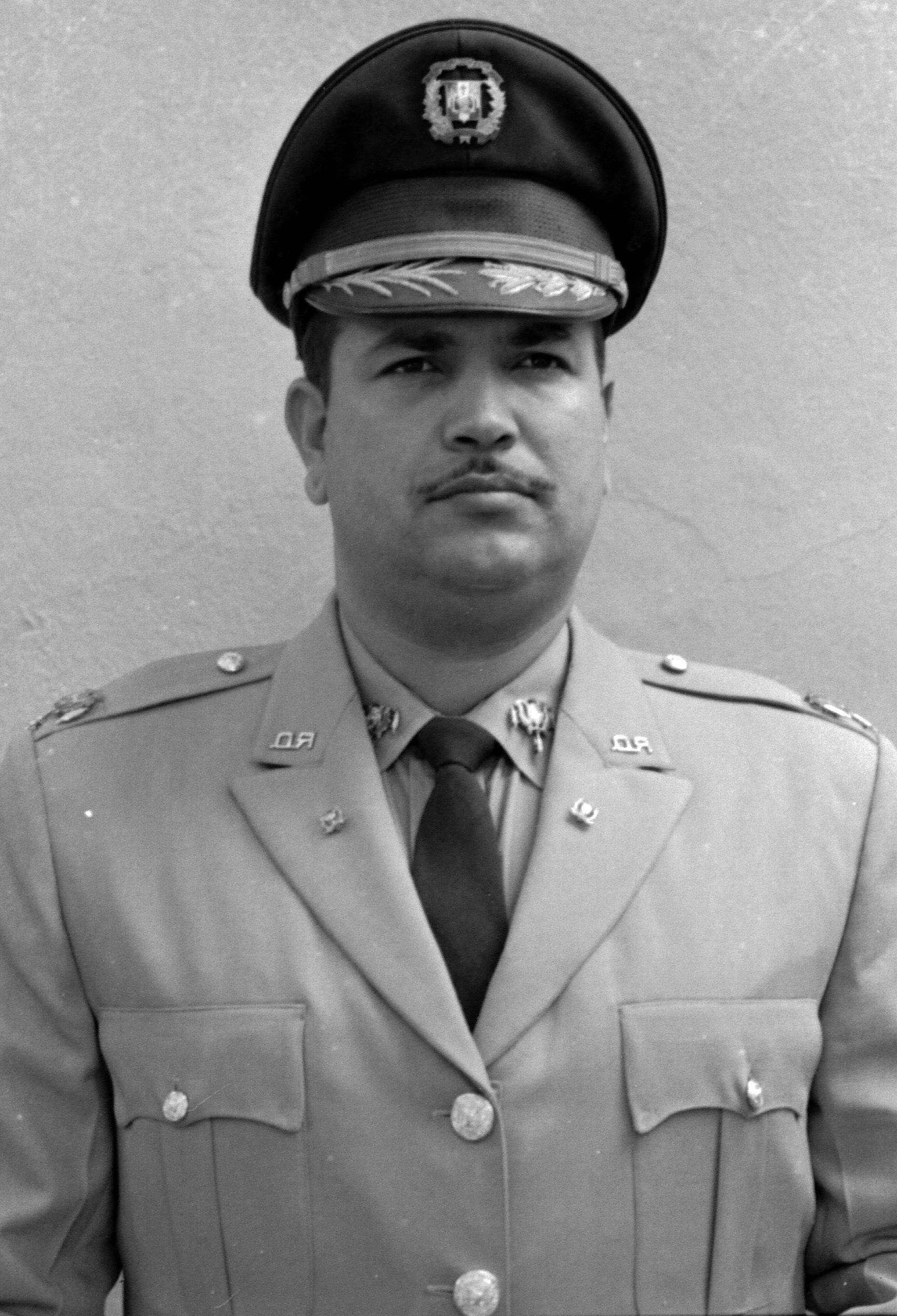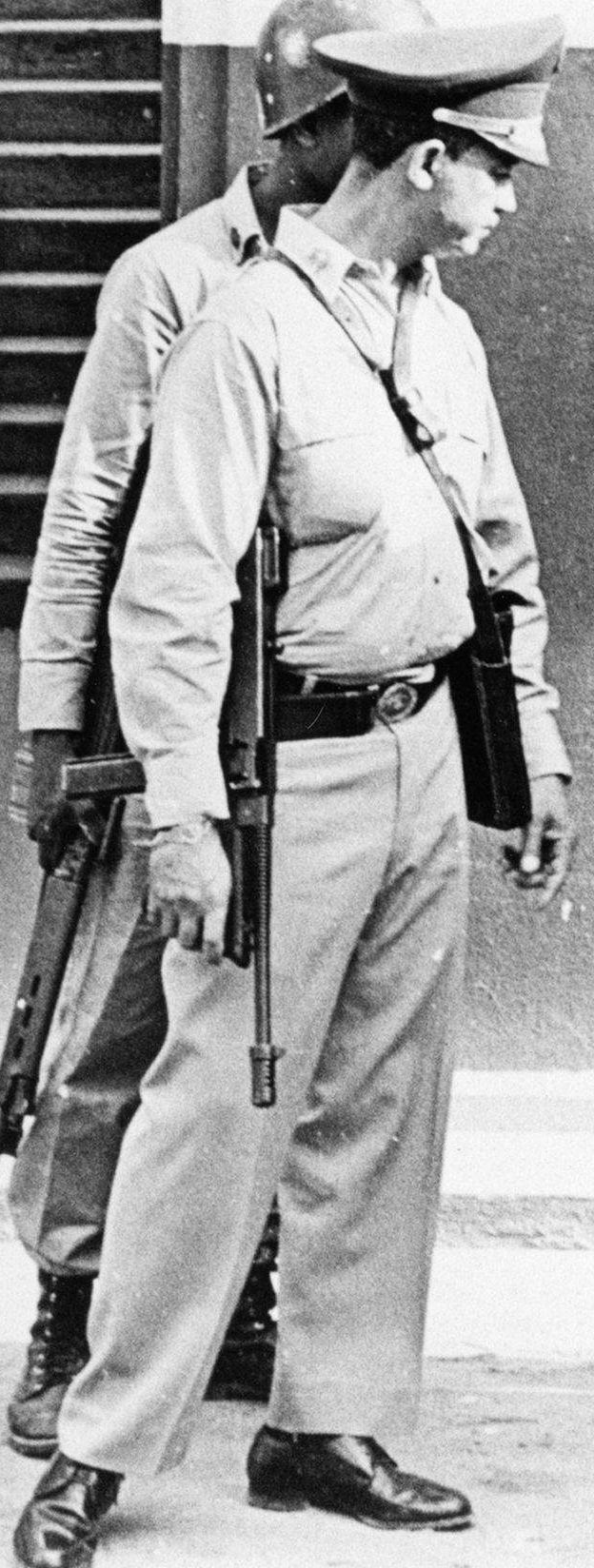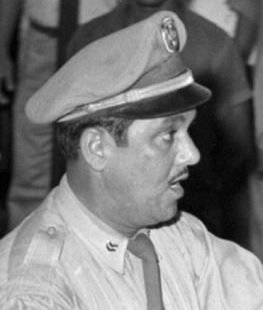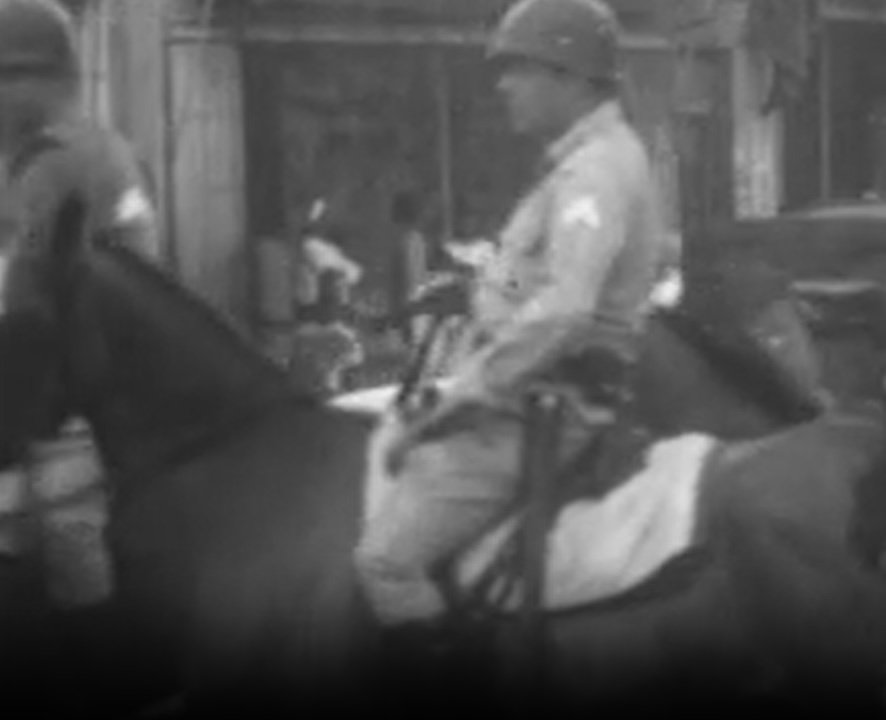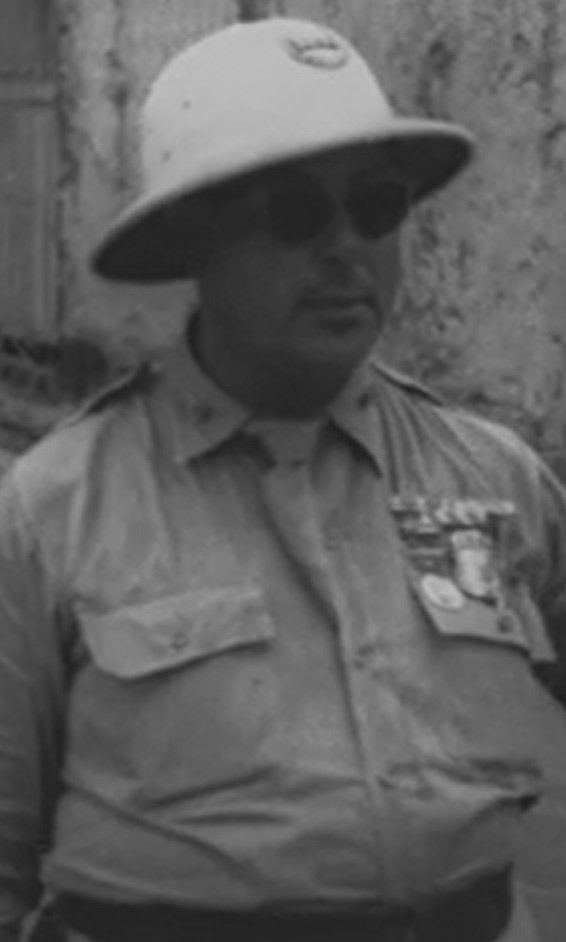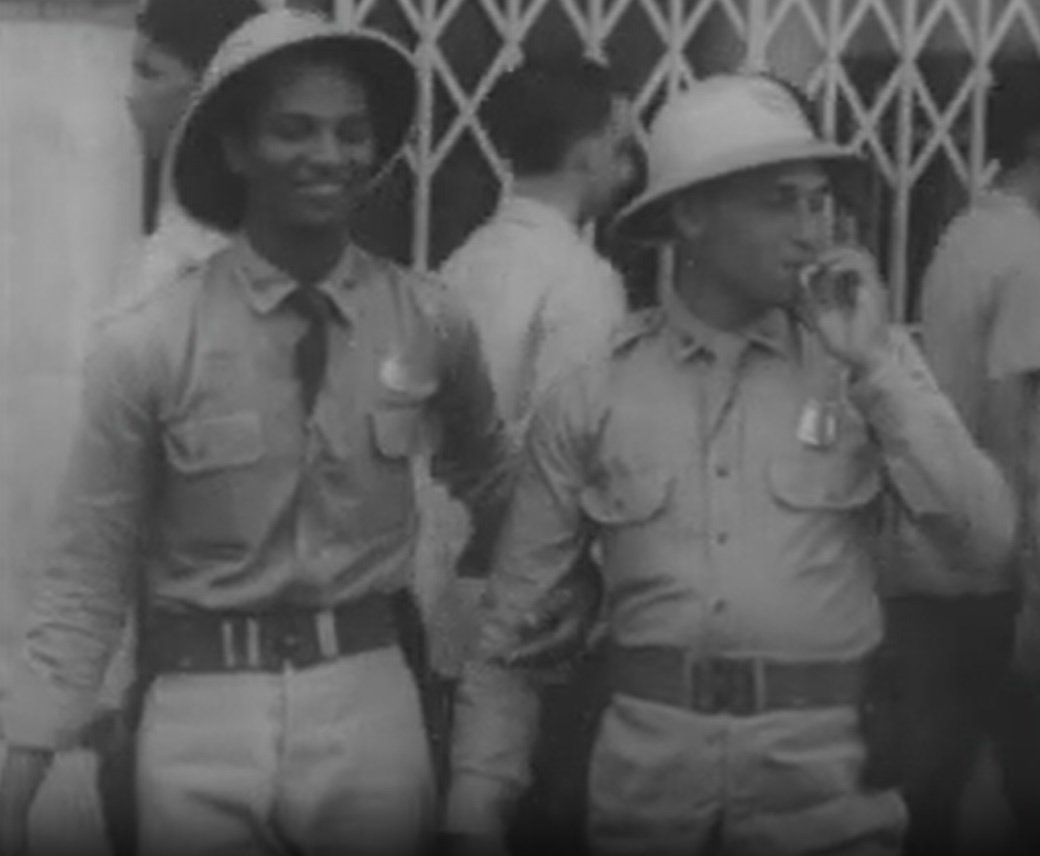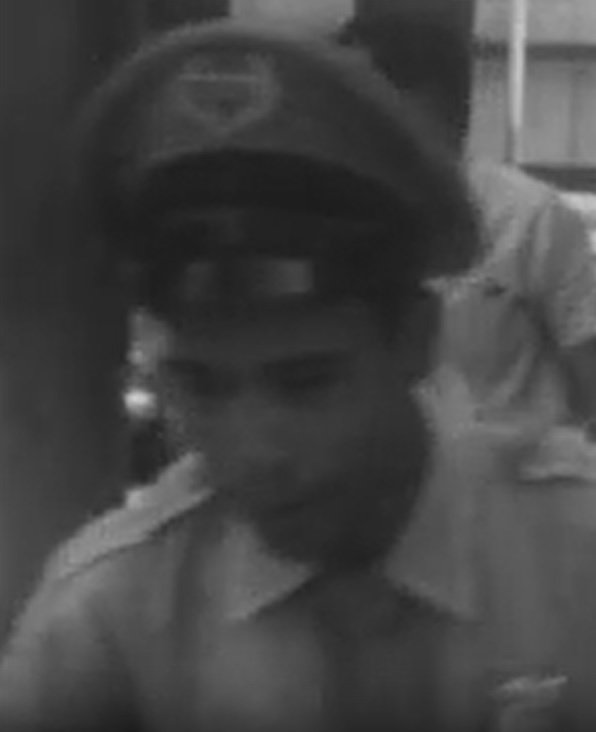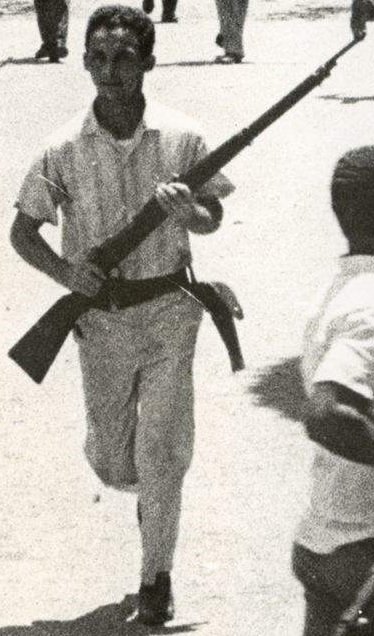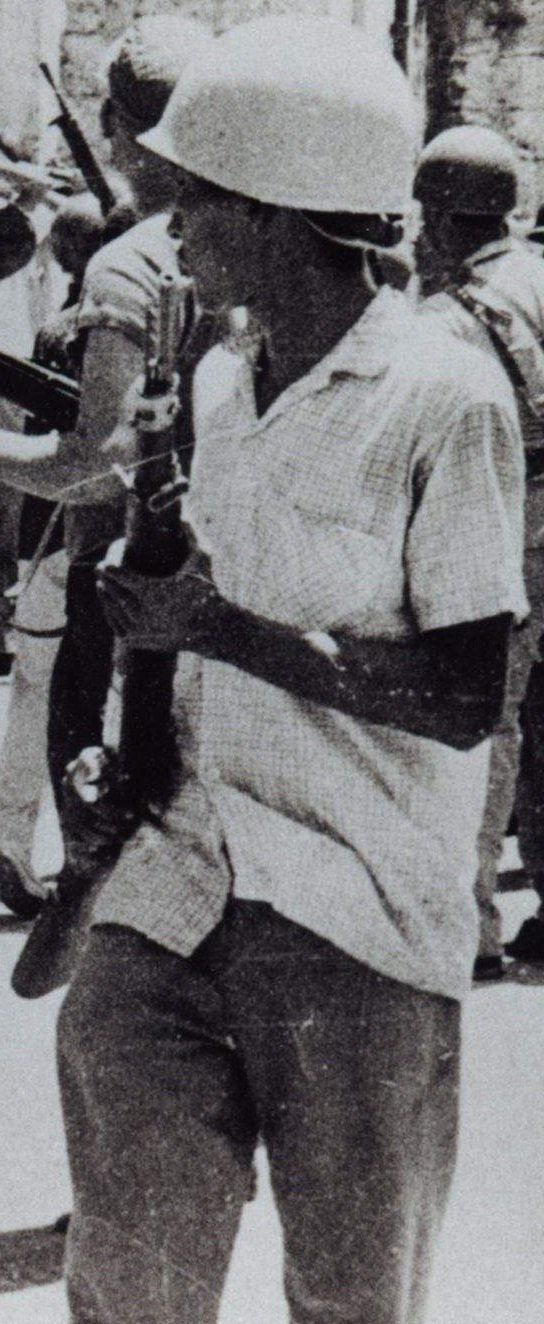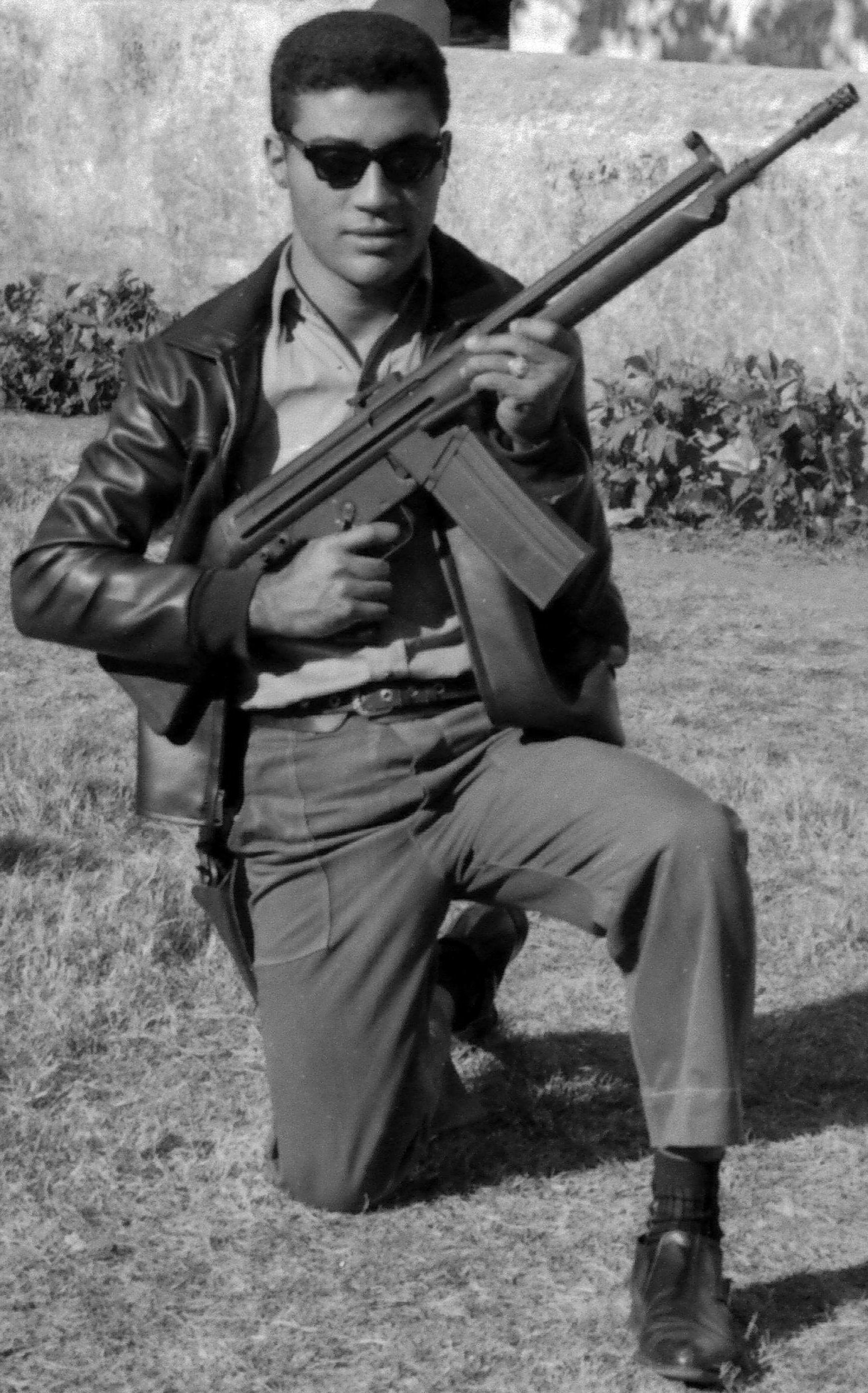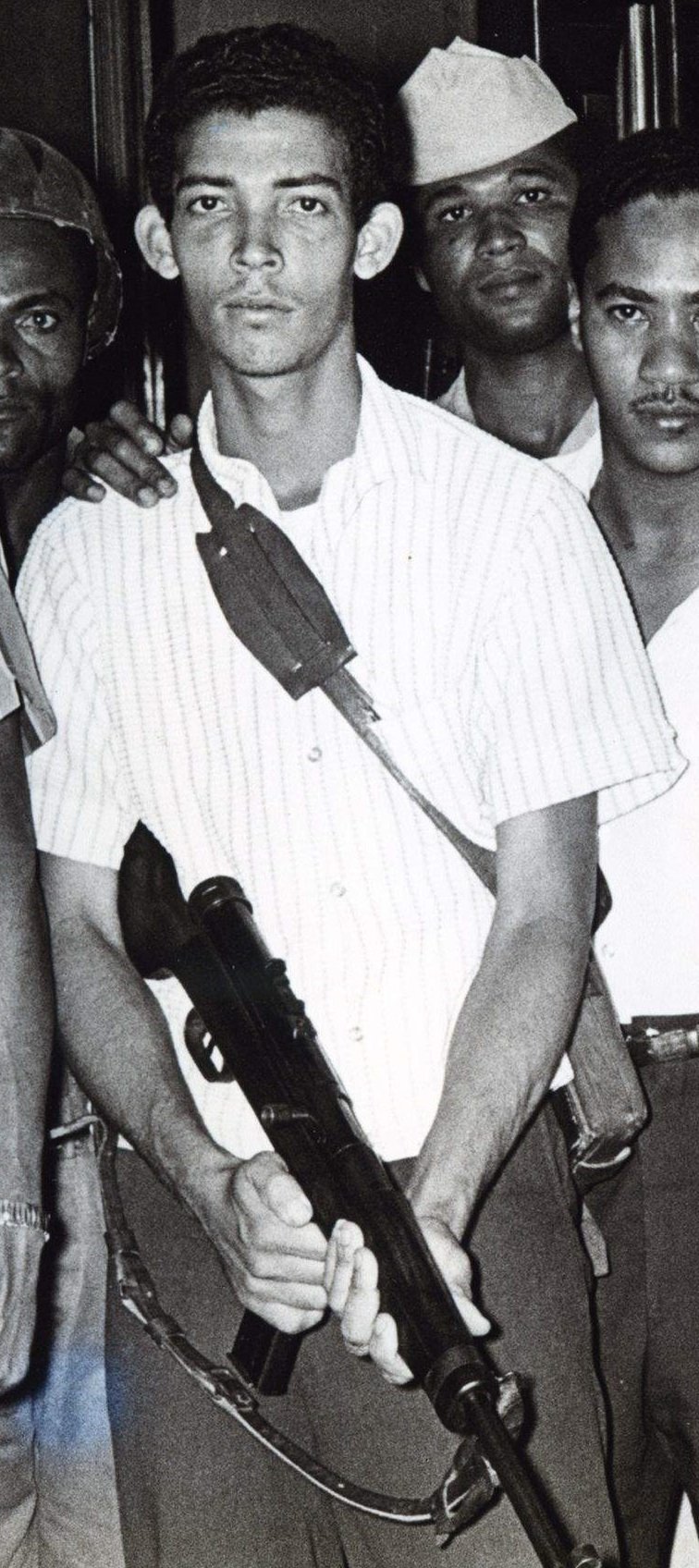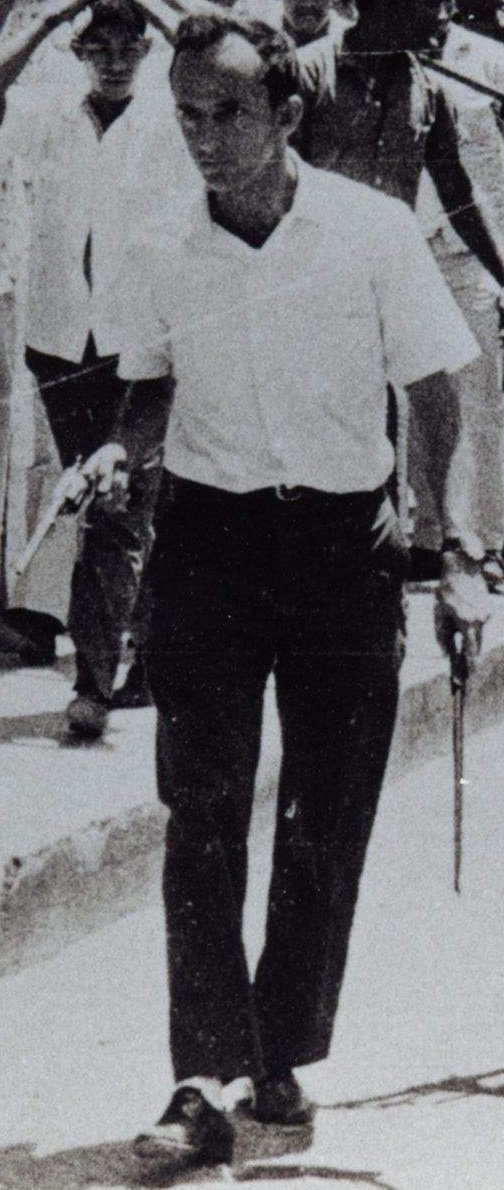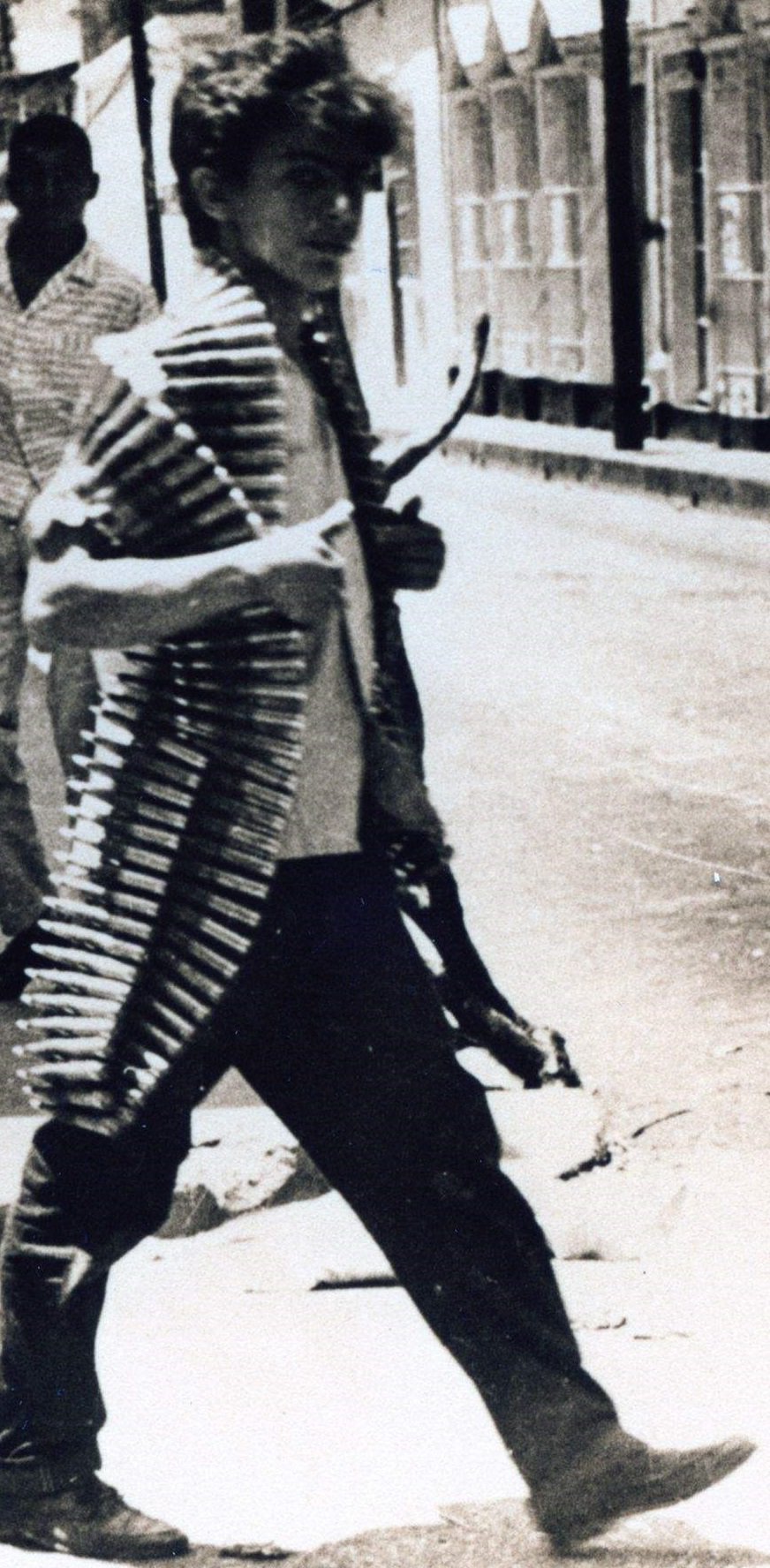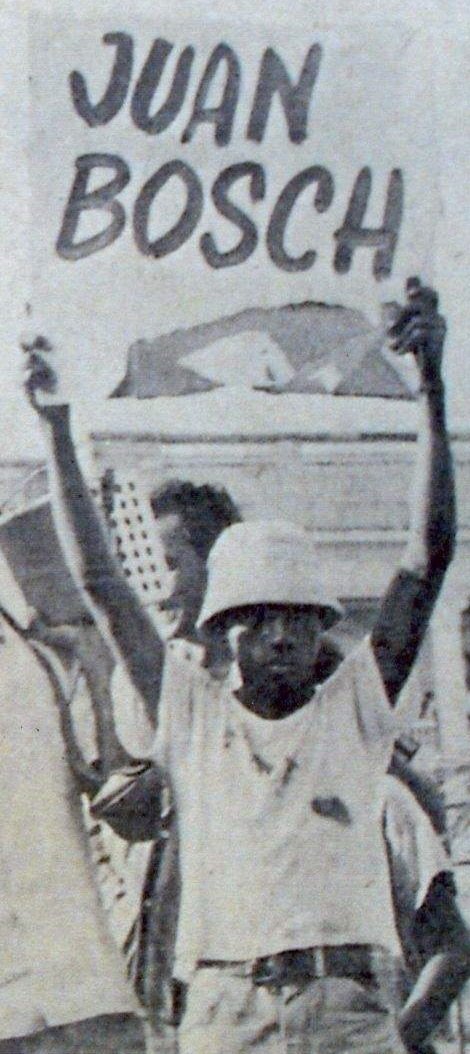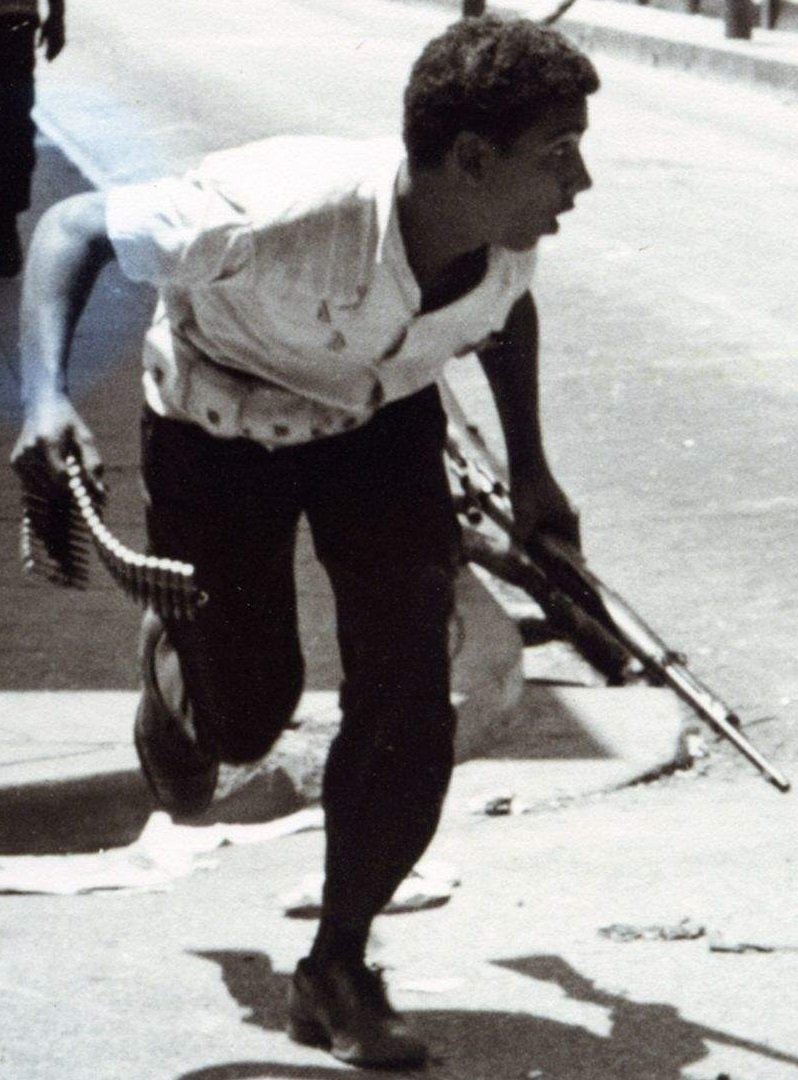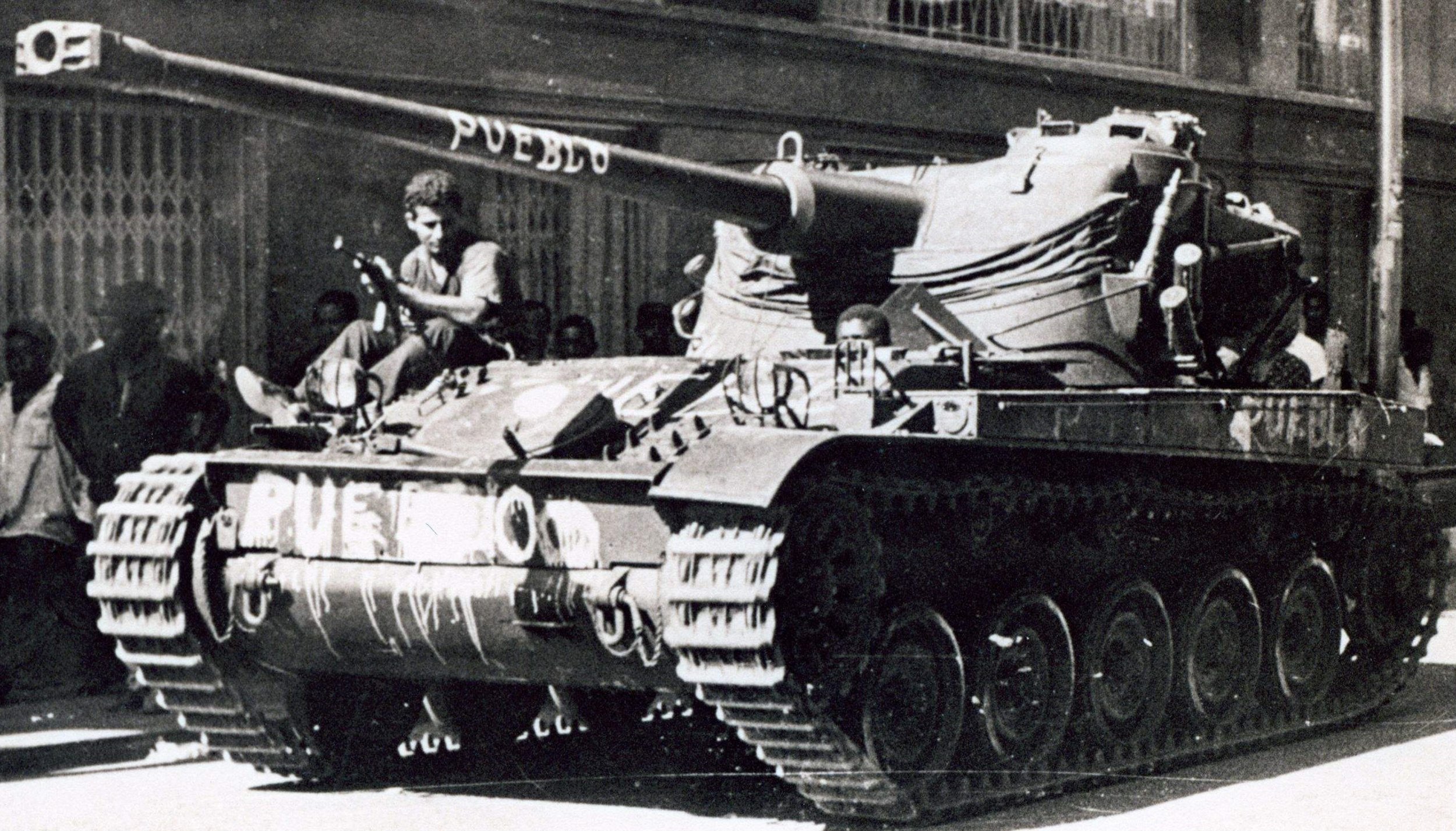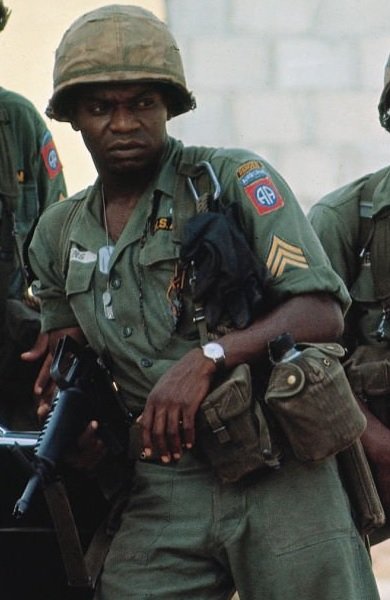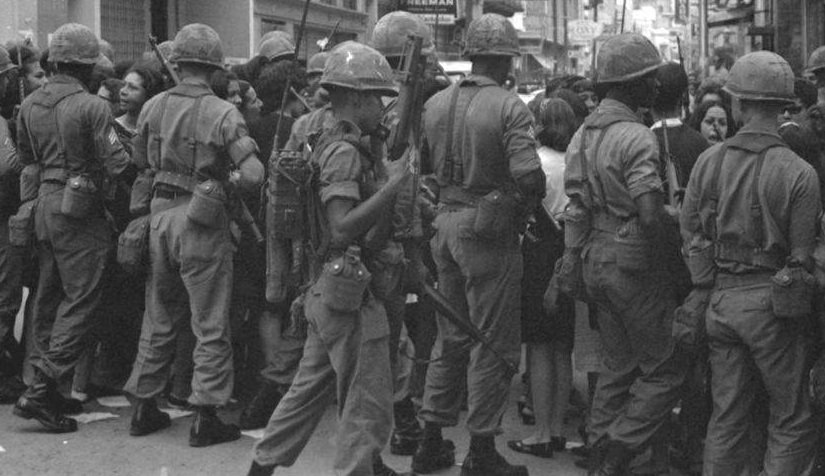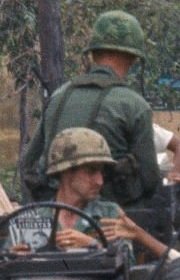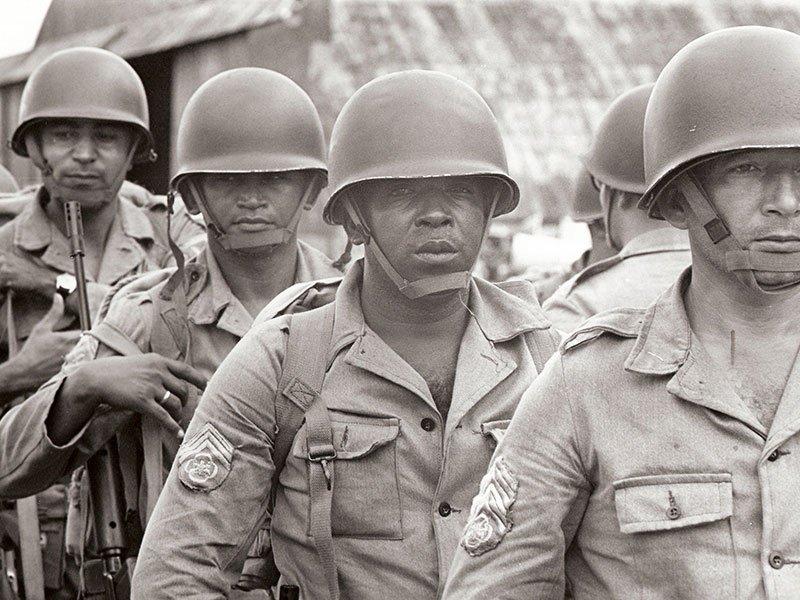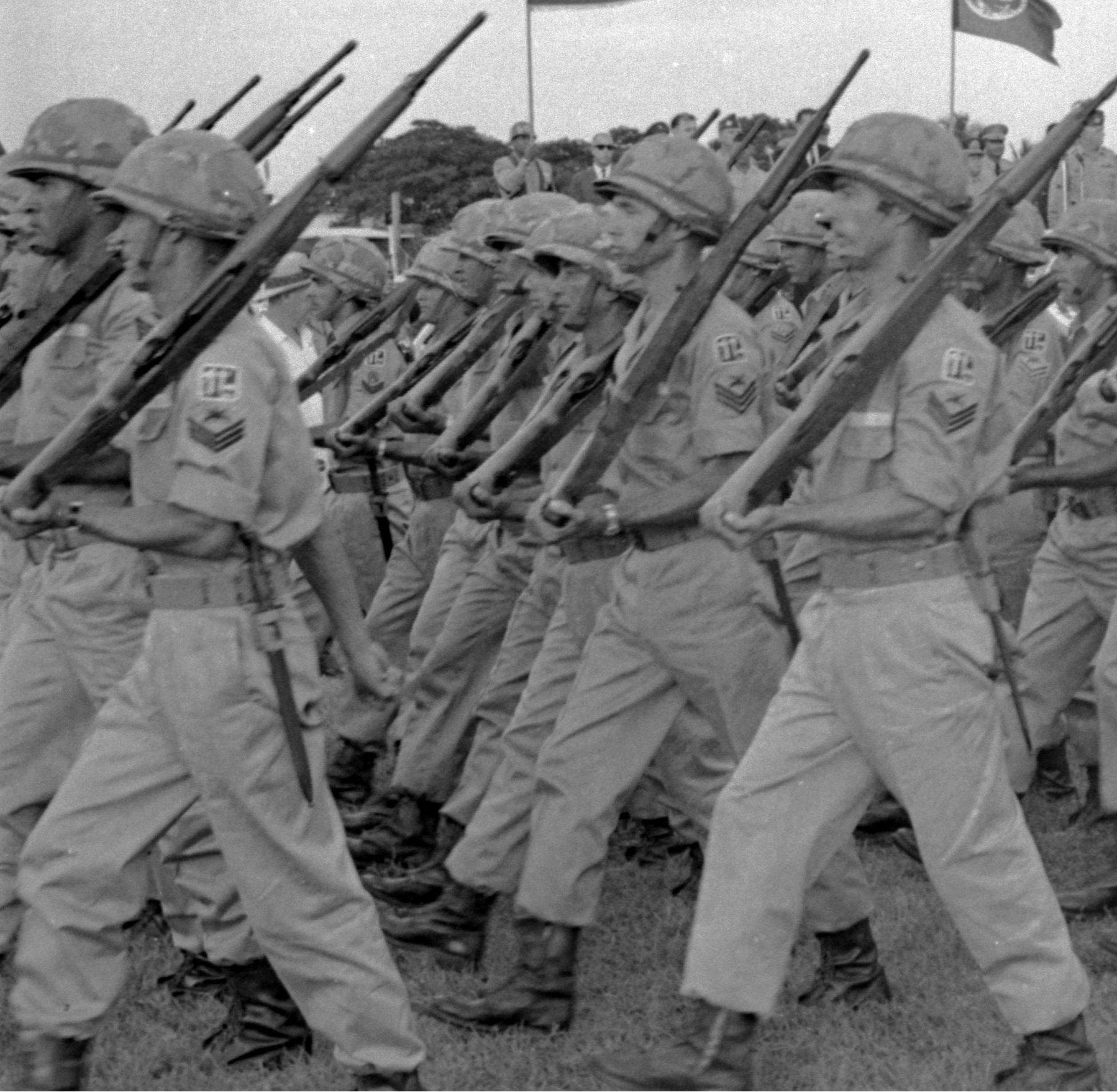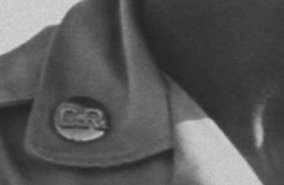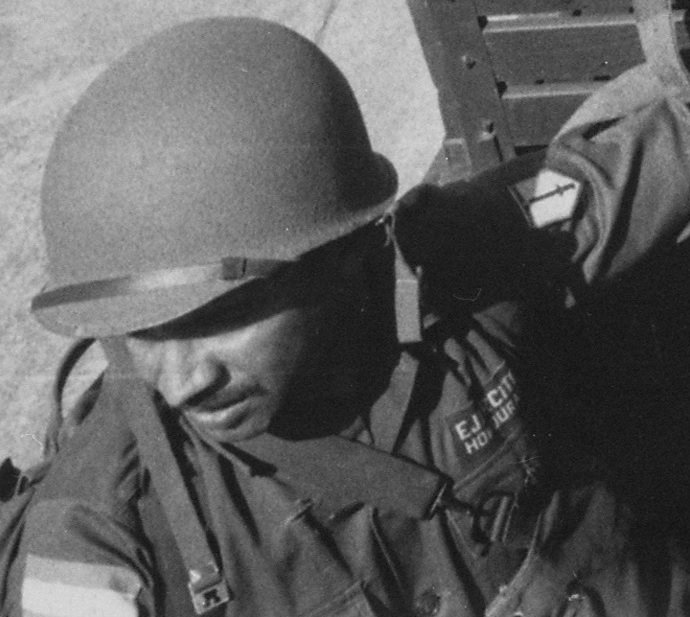SOME NOTES ON THE dominican republic civil war
and “operation Power Pack”, 1965
Introduction.
This is an interesting little topic I can’t find any treatment of from the uniformological perspective. So, here, I make a small attempt. As ever, all conclusions here are tentative and subject to correction — I don’t preface every single observation with a cautious “it seems” or “it appears that”, but, please take that as implied.
A few general remarks:
The factions. A good deal of the military went over to the Constitutionalists (Wikipedia says 1,500 soldiers, about two fifths of the total). Thus, when I’m describing the appearance of the army, I’m describing the appearance of both the Loyalists and the Constitutionalists, although it seems from the source material that many Constitutionalists adopted something of the relaxedness in dress of the civilians they fought alongside.
Manufacture. The overall appearance of these uniforms is profoundly United States, as will be immediately apparent. However, I have no idea what stuff is actually US surplus, and what’s local manufacture to US patterns, or along US lines. On this page I use the term “US-style”, which is deliberately intended to be agnostic on this point.
Limitations. Colour source-material is remarkably difficult to find. I would’ve assumed the conflict’s proximity to the USA, followed by the USA’s active military intervention in it, would’ve produced an abundance of colour photographs and footage, but, apparently not. The US soldiers themselves are covered decently, but the Dominicans themselves are rather elusive. As a result, I’ve placed some reliance here on later material (going into the 1970s), which is something I typically avoid at all costs. Obviously, not that it needs to be said, I’m only using post-1965 material if I believe it’s also correct for 1965.
Distinguishing the army from the Cascos Blancos is often a matter of guesswork, rather than anything more substantial, owing to the extreme similarity of dress between the two branches. I have done my best but I expect to have made a few mistakes here and there.
The south and central American armies are rarely attested in the source material, unfortunately. No doubt I could find more by cross-referencing against contemporary-ish footage of these armies in other contexts, but I don’t quite think it’s worth the trouble, considering the relatively marginal role they played in the fighting.
The Dominican Army.
Service dress / full dress. This seems to have been for officers only. A four-pocket tunic along the lines of the WWII US service tunic — the source material shows many variations in the shape of the lapels and the pockets. No belt. Straight unpiped trousers and black shoes. A peaked cap with the crown in the tunic colour and the band often in a contrasting shade — I can’t work out any overall system here, and it may have been a matter of personal taste. Gold buttons with (as far as I can see) the national arms. I detect three variations of this uniform:
A white or extremely light tan uniform [figs. 6-7] — this seems to have only been worn in formal situations of the kind where civilians would wear a white suit. Worn with a white shirt and black tie. The peaked cap has a gold chinstrap and black leather peak. No embroidery on the cap.
A tan uniform [figs. 1-3, 5, 8], worn with a tan shirt and tan tie — the tie about the same colour as the tunic and trousers and the shirt somewhat lighter. The peaked cap is all tan, including the peak, with gold chinstrap. For generals, gold embroidery on the peak and band — a central tie, with oak leaves on the (viewer’s) left and laurel leaves on the (viewer’s) right. Field officers had embroidery on the peak only. I lack a good view of a subaltern’s cap.
A dark uniform [fig. 4]. I haven’t seen a good view of this in colour. I’d guess, after the US fashion, a darkish green tunic and cap, tan shirt. The tie is usually tan but I also see a dark (black presumably) example. A dark cap with distinctions as for the tan uniform, and black peak.
The tan uniform, with the dark cap, is commonly seen [figs. 3, 5].
Full-colour national arms were worn on the cap crown. Gold “R.D.” letters on the upper lapels and a badge on the lower lapels. The infantry (or perhaps the army as a whole?) wore crossed rifles, and a star with the national arms in the centre is commonly seen — generals and the general staff, perhaps. No doubt there were others.
A large twisted red, white and blue fourragère with two points, one solid red and the other solid blue, was sometimes worn on the left shoulder. The significance of this is unclear to me. General officers wore a gold aiguillette (piped a secondary colour — red?) on the right shoulder. Sometimes this was fixed to the top button of the tunic, other times it seems to have just looped around the shoulder.
Rank insignia (for subalterns, upright laurel branches; field officers, the national arms in full colour flanked by upright laurel branches; general officers the same with stars instead of branches) was worn on the shoulder straps and points of the shirt collar.
In about the 1980s, Dominican generals started wearing naval-style shoulder boards. I see nothing to indicate this was done at the time in question.
Fatigue / utility uniform. Tan or olive drab shirts, long or short sleeves (all four variations can be seen). Four-pocket trousers with solid buckle US-style belts. Black leather boots or lace-up shoes of various designs, some distinctly non-military in style. Officers wore rank insignia on each collar point. Men’s insignia was upwards-pointing chevrons, seemingly in either light or dark shades.
A variety of headgear — both officers and men can be seen with olive drab “Ridgeway caps” [figs. 11, 13, 15], a softer olive drab square-topped cap, probably of local manufacture [figs. 9, 14], and US-style garrison caps in green or tan [figs. 12, 16-17]. The two styles of peaked cap were worn with a small metal coat of arms [fig. 13] — a few officers can be seen with the larger full-colour coat of arms from the service dress cap [fig. 11], or the full-colour coat of arms with rank insignia [fig. 15], presumably taken from service dress shoulder straps or shirt collars. Sometimes there’s no insignia — perhaps enlisted men didn’t typically wear any(?). The garrison cap can be seen with no insignia, or the small coat of arms on the (viewer’s) right [fig. 12], or the same, with rank insignia on the left [fig. 16]. Some caps were piped [figs. 12, 17], in unclear colours — officers’ in two colours, perhaps US-style twisted black and gold. A variety of non-regulation but military-ish caps can also be seen. One man (of unclear allegiance) can be seen in a very stylish baseball cap with sleeve rank chevron on the front [fig. 18].
Field uniform. The fatigue / utility uniform, with M1 helmets (or their liners) and whatever belt equipment was appropriate for the weapon. The most common weapon seems to have been the venerable Mauser 08, apparently purchased from Brazilian stocks. The Cristóbal carbine is seen, but was perhaps restricted to NCOs (in contrast to its widespread use by the Cascos Blancos). Its pouch was a boxy leather affair, with flap, worn over the shoulder on a leather belt, with a “laptop bag” style wider section at the shoulder itself [figs. 23-24 — also 55, 72.]. I haven’t seen any men with FAN FALs I’m 100% sure are army and not Blancos. Canteens, of the US model, very occasionally seen.
Camouflage. The occasional suit of “duck hunter” type camouflage can be seen — either the US WWII type or a copy. I don’t know what army units had this in their wardrobes, if any.
Parade dress. The field uniform, in tan, with long-sleeved shirt, and tan ties tucked into the shirt. Enlisted men had a badge of some description on each collar point, officers presumably wore their rank insignia on the collar. Some officers (field officers?) wore a pistol with magazine pouches, and carried a sabre. A colour of some description carried by a senior NCO, with Mauser cartridge belt.
Barracks dress. A tan utility uniform with dark tie, worn loose or tucked in, seems to have been an officer order of dress for barracks / office / “inside” generally.
Armour. The Dominican army possessed 20 Swedish Landsverk L-60s [fig. 28], 15 French AMX-13s [fig. 29] and 13 Danish Lynx armoured cars [fig. 31] (numbers all per Wikipedia). I’ve seen one contemporary colour photo of an L-60, which is in a dull olive green, seemingly identical to the contemporary colour used on US vehicles.
Getty has a good photo of an L-60 here, dating from 1961. Markings: a circular roundel, in air force style, on the side, a three-digit number on the front (viewer’s) left glacis plate, a letter and number just behind the roundel. By 1965, these insignia seem to have vanished, replaced with a roundel with, in the centre, a dark disc with a light silhouette of a tank(?) on the central glacis plate [fig. 30]. The AMX-13s seem to have had the same roundel on the front, and I see no markings on the Lynxes (at least, from this single photo).
Tank crew wore fatigues and US-style crash helmets.
The Dominican Air Force.
Service dress / full dress. As for the army except as noted. This seems to have existed in two models, tan and blue. I’ve only seen the blue uniform once, in footage where it’s worn alongside army officers in the white uniform, so I’d guess from that the blue uniform was the equivalent of both the white and green service uniforms for the army. The cap seems to have been of the army model, but in blue. Presumably a tan one could also be worn with the tan uniform, though I haven’t seen it. A blue tie. Twisted blue and white (no red) fourragère with two blue points, or the army-style red-white-blue one (unclear). The air force badge on the lower lapels — seemingly a vertical propeller flanked by wings. The same “R. D.” on the upper lapels as for the army, though it’s hard to make out in these images. A roundel on the upper left sleeve — perhaps also the right sleeve (unclear). Pilot wings of some description worn above the left pocket.
Fatigue / utility uniform. Seemingly the same as the army, but with light greyish-blue fatigues and a blue garrison cap. The shirts occasionally had air force roundels on both sleeves. Further details unclear. No doubt some of the light shirts seen in black-and-white photographs were tan instead of greyish-blue. We see peaked utility caps of unclear colours.
Field uniform. The fatigue / utility uniform, or “duck hunter” camouflage (complete or partial suits) with a stahlhelm of unclear colour. Mauser rifles and FN FALs (belt equipment the same as the army).
Parade uniform. The same as the field uniform except as noted. The shirt had an air force roundel on both upper sleeves, and a dark tie was worn tucked into the shirt.
The Dominican Navy.
Navy uniforms. Seemingly very US in appearance. Officers had three types of service uniform, all as pictured. White with standing collar and black shoulder boards [fig. 41], black with open collar [fig, 42], army-style tan with open collar [fig. 43]. Flag officers wore army generals’ insignia and had a very distinctive cap band, with foliate embroidery going right up and over the cap badge, as pictured. An officer can be seen in tan utilities with anchor badges on the collar points, and anchor cap badge as illustrated [fig. 44]. Enlisted men in the standard US-style “square rig”. An NCO is pictured with small national arms above his chevrons [fig. 46] — unclear if this was regulation for all ranks.
The frogmen. This elite, and very chic, unit wore a mix of olive-green fatigues and US-style “duck hunter” camouflage, including caps. A couple of officers can be seen with what seem to be black fatigues — one has a left sleeve badge of some sort and a garrison cap (unclear colour) with piping and an anchor badge. These men were heavily armed — many M-16s are in evidence, plus FALs and the occasional Cristóbal, CETME and Thompson. In the civil war this unit was commanded by the quixotic Italian mercenary Ilio Capozzi, who seems to have been killed in the fighting.
The “Cascos Blancos”.
Formally called the Fuerza de Choque, this was a highly militarised gendarmerie type unit, employed in putting down riots in Santo Domingo and so on. They seem to have formally been a part of the police, but they dressed very similarly to the army, and were probably better armed, man for man. They can be distinguished from the army by their pistols, truncheons, and, of course, their signature white M1 helmets. Many Blancos on the Constitutionalist side seem to have discarded their helmets and just worn the liners — no doubt this was a practical expedient for avoiding friendly fire, but for identification purposes it’s an extra bit of awkwardness.
Service dress / full dress. I don’t have a confident view of this. Constitutionalist leader colonel Francisco Caamaño was formerly of the Blancos, though I don’t know when he left them. He appears in one set of photos wearing an army-style service dress uniform, with a small metal version of the national arms on the lower lapels [fig. 59]. This is conceivably the distinctive insignia of the Blancos, though I’m far from certain. I must assume the cap in this photo is green, though conceivably it could be a police blue, or something off-road like that.
Fatigue / utility uniform. Entirely as per the army, so far as I can see. Peaked caps make the occasional appearance [figs. 60-61] — army style for the officers, gold chinstraps but no embroidery for the men. The figure at fig. 61 is notable for wearing what seems to be a corporal’s chevrons, in metal, on his collar. This is the modern army usage, but it doesn’t seem to have been at all common at this time.
Field uniform. The fatigue / utility uniform, with white M1 helmets.
Pistols seem to have been universally carried — in black leather holsters, with a black leather two-magazine pouch, all worn off a US-style pistol belt. Truncheons were commonly worn, from the belt [fig. 53] — the US military police had a special baldric for the truncheon which fitted to a pistol belt, which I assume is what was used here.
Cristóbal carbines seem to have been issued to this corps more promiscuously than to the army. The army shoulder pouch was worn, as was a smaller leather pouch with rounded flap, worn on the belt [figs. 50-51], which seems to have been unique to the Blancos. One officer (I think of these men, and not the army) is seen carrying a Thompson, with magazines in a Cristóbal shoulder pouch [fig. 60]. Other men had FALs or CETMEs, both worn with two square pouches (triangular flaps with “lift-the-dot” style fasteners) on either side of the belt [fig. 58]. Mauser carbines of some model can also be seen, with army type belts and bayonet frogs [fig. 57].
Gas masks were commonly worn, in connection with the use of gas for riot-control purposes. These were a mix of the US WWII model, with hose running into a shoulder bag [fig. 53], and a more modern type with large external filter (details unclear). Some men can be seen with some sort of open-topped two-cell carrier, worn on the waistbelt [fig. 54] — these perhaps contained gas grenades?
There was a mounted police unit. I don’t know which organisation this belonged to, but perhaps the Blancos and not the regular police — the uniform is in army style. The helmet is, of course, not white, but this seems to be the liner and not the helmet proper.
The Dominican police.
The police seem very much to have been “beat cops”, with the heavy work left to the Cascos Blancos.
The service dress seems to have been a lightish blueish grey, the caps with dark bands. Silver metal (uncertain). Fatigues a light colour — tan, or the same blueish grey, or both. Evidently a mix of tie colours. Pistol belts with leather pistol holsters and magazine pouches. Rank insignia (for all ranks?) on the collar. The badge on the cap and pith helmet seems to have been the policeman’s individual number, in a wreath. US-style badges (presumably also with the number) worn above the left breast pocket.
Constitutionalist irregulars.
As mentioned up in the introduction, the Constitutionalists were far from simply an armed mob, as a large amount of the regular army went over to them at the outbreak of hostilities. Their numbers were however greatly augmented by civilians, who raided (or were allowed to raid) government arsenals before joining the fighting.
The pictures above are simply a representative selection — the variety one sees in the photos is impossible to capture. Clothing was either wholly civilian or, rather less commonly, civilian with army caps or helmets. Weapons seem to have predominantly been Mausers and Cristóbals, though I’ve also seen a Thompson, Lee Enfield Mk. 4, a Bergman or Lanchester SMG, CETMEs, FALs, Mauser carbines, a bazooka, plus miscellaneous small arms. No doubt M-16s also appeared from time to time.
Captured armour had “PUEBLO” vigorously painted onto it.
The US Army.
Passing over this very quickly — the appearance of the US Army is well known. The men in the Dominican Republic wore green fatigues, “colourful” insignia and WWII pattern helmet covers — these seem to have been worn with the green side out, though a lot of examples in photographs are so faded they look like the brown side [fig. 82]. M56 web equipment. Weapons a mixture of the M-16 and M-14. Officers on liaison or other peaceable tasks in tan utilities with garrison caps, etc. During the “peacekeeping phase” “OEA”, in white, was stencilled on the sides of the helmet covers.
The Brazilian Army.
Tan fatigues. M1 helmets, with or without covers (US WWII-style). Evidently a couple of different styles of chevrons. Unit insignia on the upper left sleeve. Some men with white name tapes. US WWII-style webbing. FN 49 or FN FAL rifles.
The Costa Rican Civil Guard.
Unclear colours. M1 helmets with “OEA” stencilled on each side. Light fatigues. FN FALs or M-16s. Circular metal collar discs with “C.R.”. On each upper sleeve, an outlined shoulder arc reading “COSTA RICA” above an indecipherable circular insignia. Military police (and, apparently, the entire contingent was military police) on the left upper sleeve wore a brassard reading “P. M.” below small metal crossed pistols. M-16s or FN FALs. Webbing of presumably some US model.
The Honduran Army.
Unclear colours. M1 helmets with “OEA” stencilled on each side. Light fatigues. “EJERCITO / HONDURAS” in orange, on a black rectangular patch above the left pocket. At least some men had white name tapes above the right pocket. The insignia of the unit deployed was a dark upwards-pointing sword, with a line of text above, on a light shield (colours unclear). The Honduran flag worn on the upper right sleeve. Some men can be seen with a dark brassard reading “OEA” on the upper right sleeve. Sleeve chevrons for NCOs, collar insignia for officers. Officers also had dark US-style peaked caps, with the national arms (in colour?) worn on the crown. US WWII-style webbing. M1 Garands.
The Paraguayan, Nicaraguan and Salvadoran Armies
I haven’t seen any of these! Details hopefully to follow.
Small revisions 23 April 2023
31 March 2023

